classics: archeology of roman history quiz 2
1/71
There's no tags or description
Looks like no tags are added yet.
Name | Mastery | Learn | Test | Matching | Spaced |
|---|
No study sessions yet.
72 Terms
horror vacui
A Latin term meaning "fear of empty spaces," used in art and architecture to describe a style that fills every available space with detail.
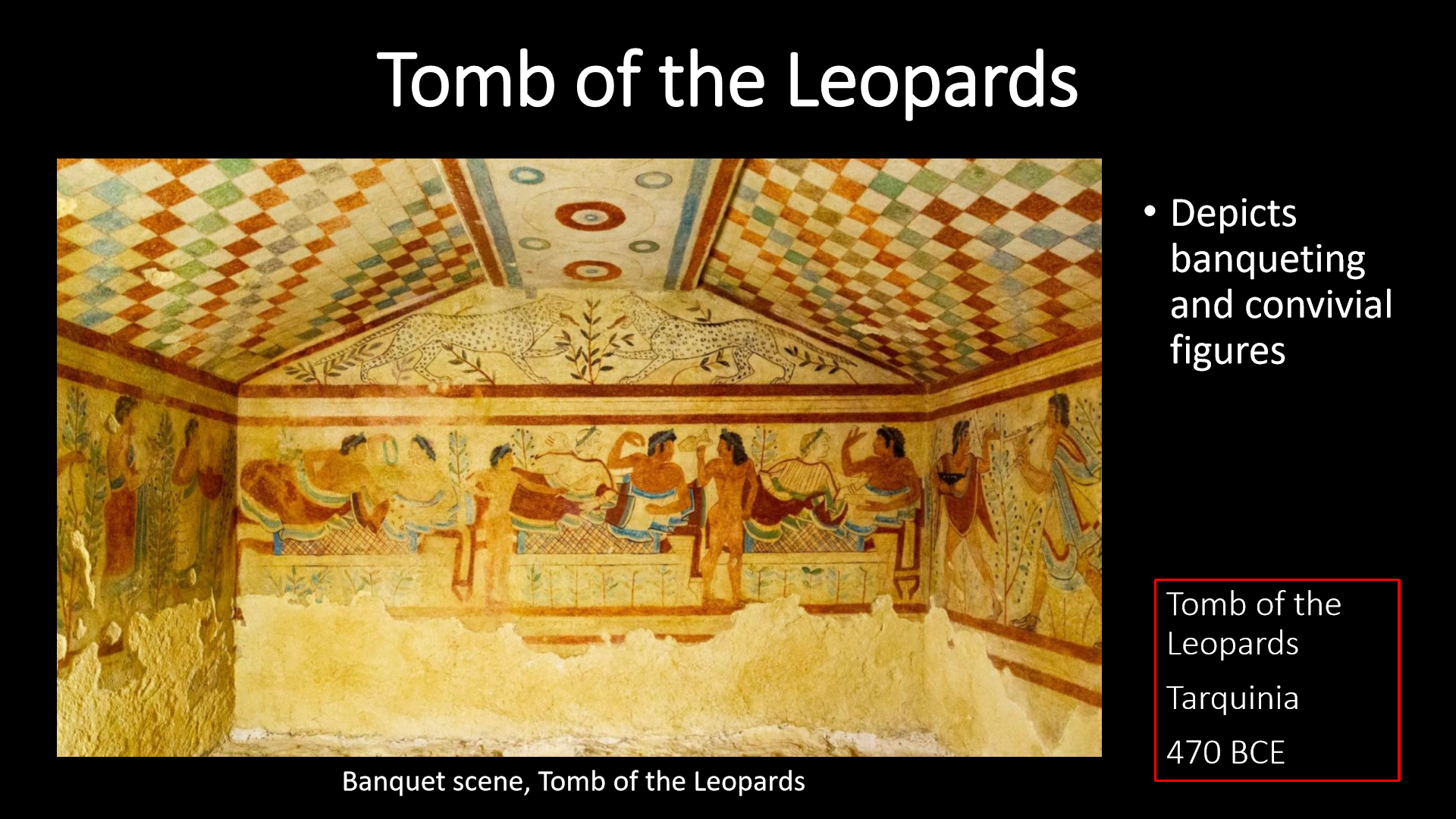
tomb of the leopards wall painting
from 470 bce in tarquinia, depicts a banquet scene with leopards and musicians, showcasing Etruscan artistry.
the tomb of the leopards could also represent
the Etruscan belief in the afterlife and their social practices.
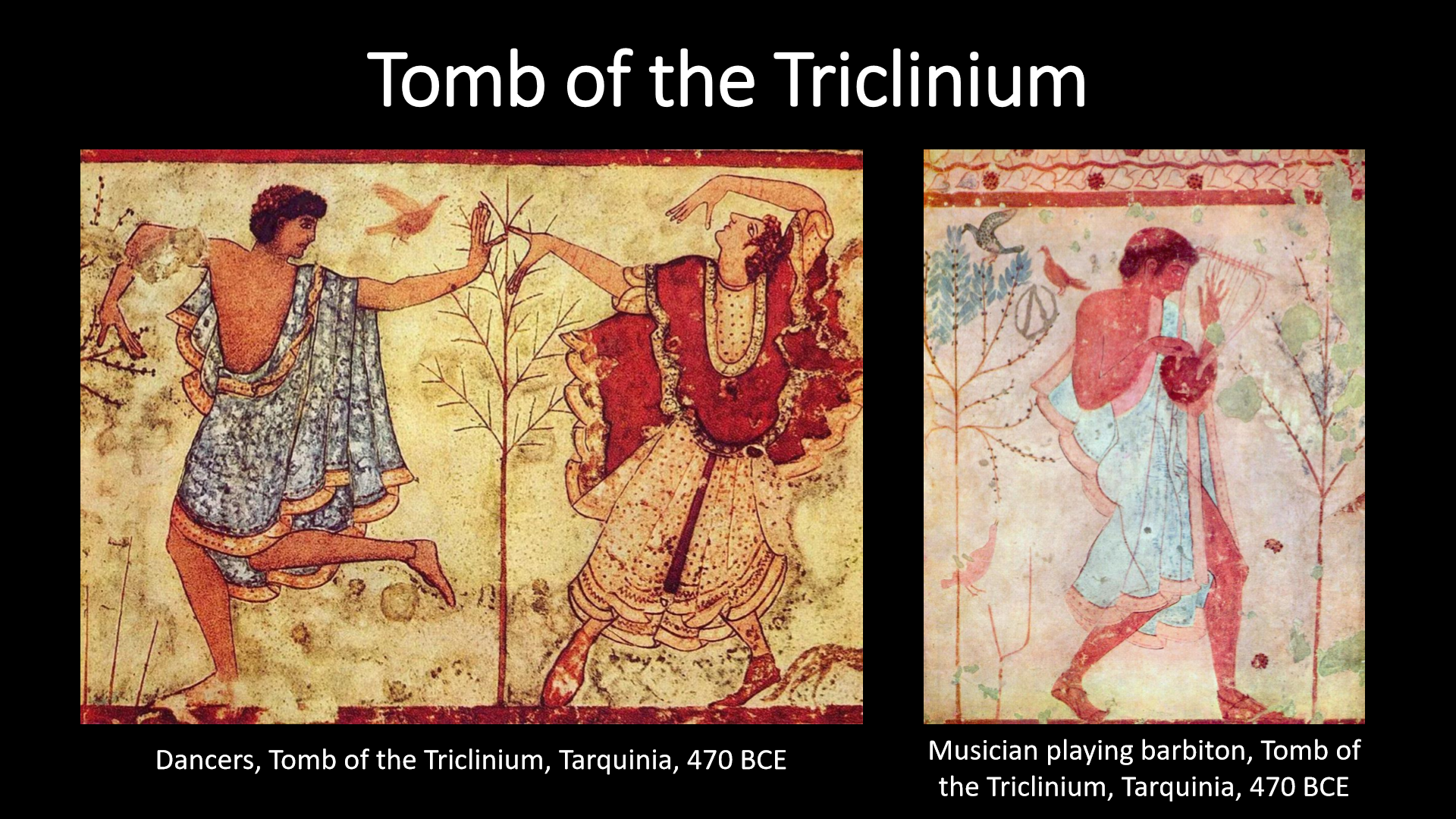
tomb of triclinum
An Etruscan tomb featuring a dining room layout, illustrating scenes of banquets and social gatherings, reflecting their customs and beliefs about the afterlife. from 470 bce and the banquet scene has dancers and muscians.
who is charun to the etruscans?
Charun is the Etruscan god of the underworld, often depicted as a psychopomp who guides souls to the afterlife.
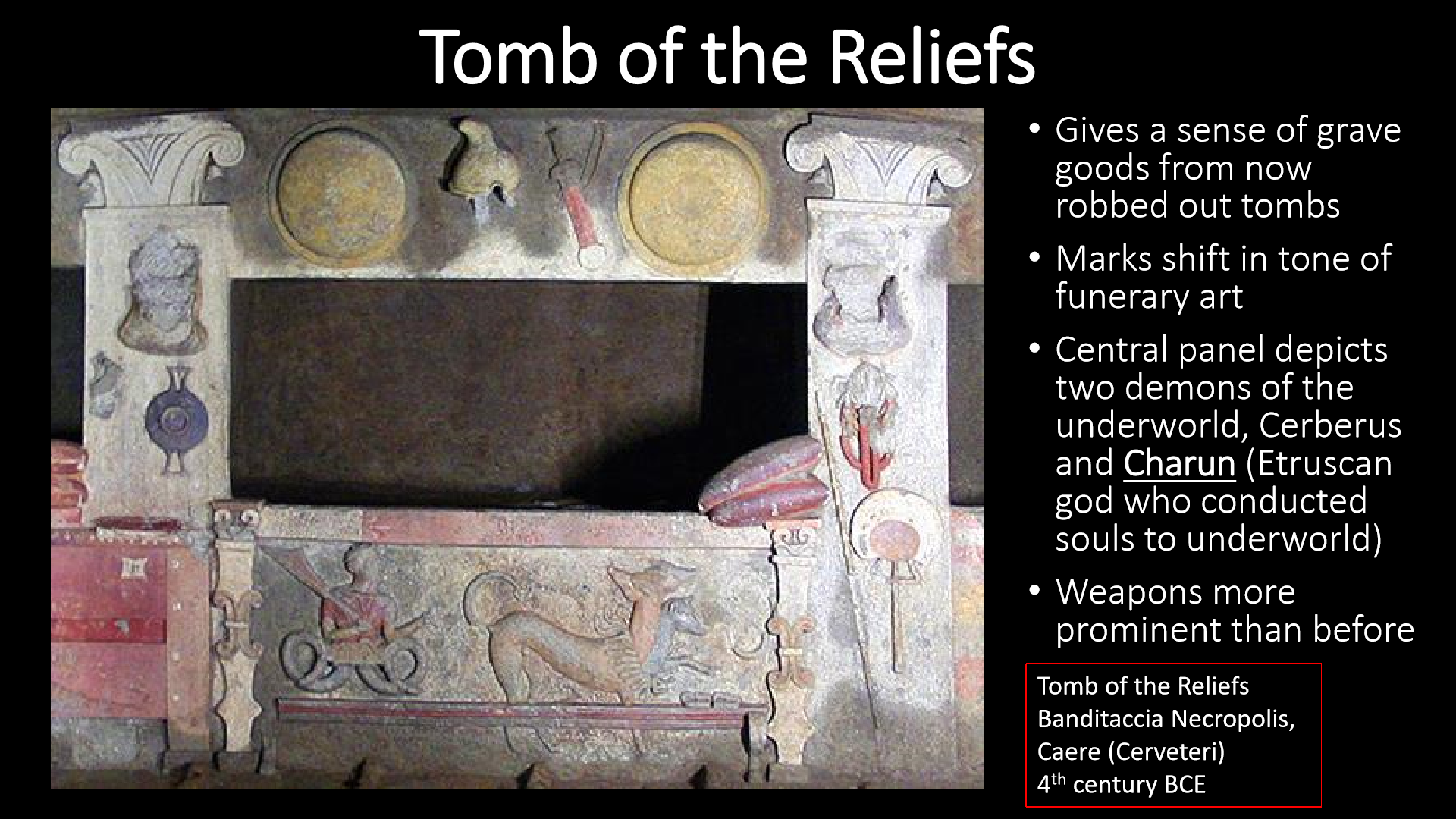
tomb of the reliefs 4th century Bce
this tomb marks a shift in tone from funeary art, instead of it being happy with a banquet scene there is a lot of depiction of weapons.
tomb of orcus 330 bce
this tomb shows a darker side of death with a banquet scenes that have demons in them. there is no depiction of youth like in the tomb of leopards and tricliunium.
the tomb of orcus showed a change in wall paintings by
showing more individualistic themes, like there is the persons name in the portrait and the people in painting are less generic.
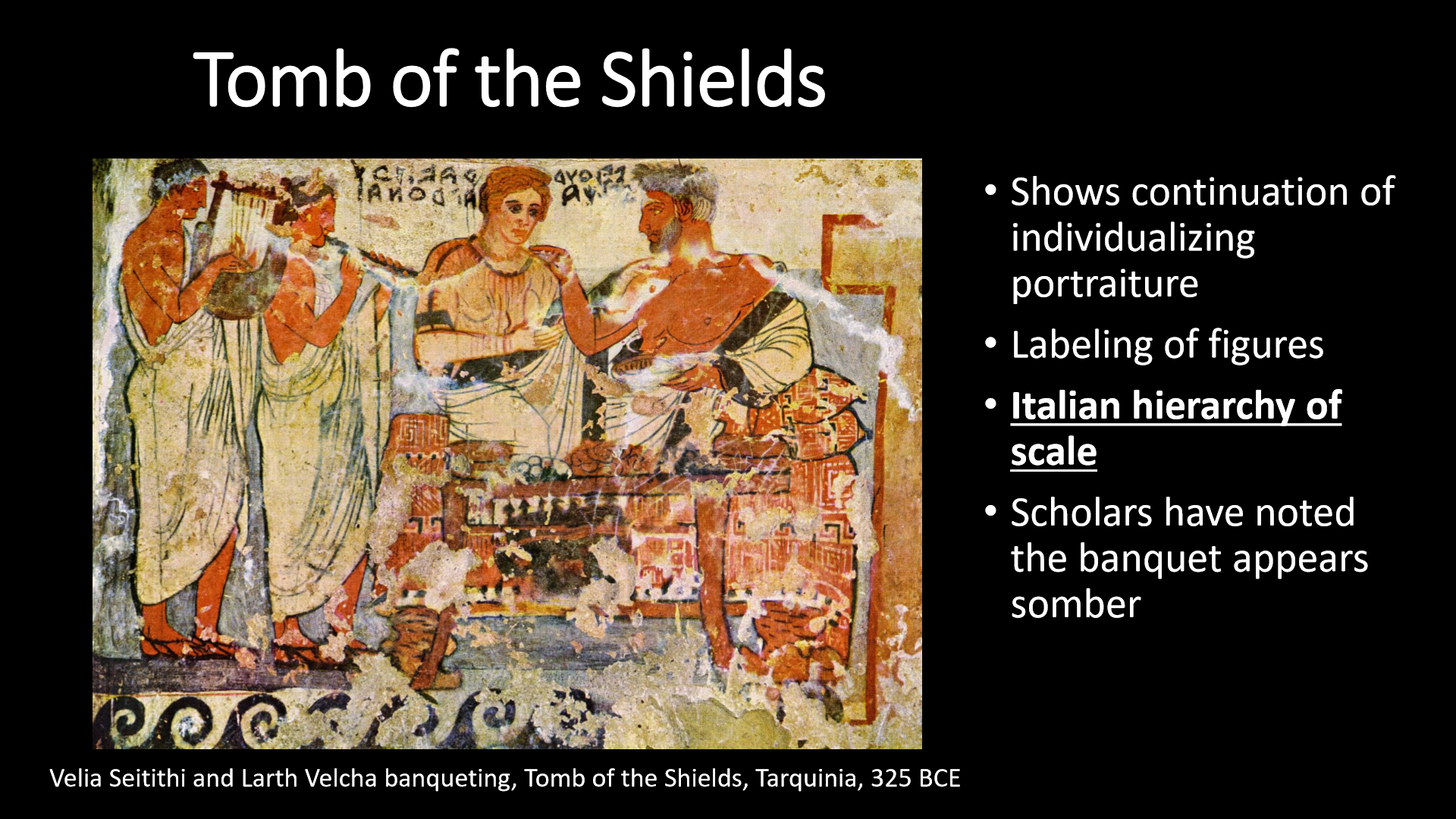
tomb of the shields 325 bce
also shows indvidualization of the art. and it is more somber.
the most important people in this scene are larger than the others.
why did the funerary art go from very generic depictions to demonic and somber depictions.
it could be because the etruscans are being pushed put by rome (caused war and tumoil). which made the art more darker.
the francois tomb, vulci 4th century bce
the tomb has scenes from battle. one of the scenes show the trojan prisoners being executed.
what is a toga picta
it is a toga worn by roman generals after a victory in battle.
what is a votive and give an example.
a votive is a offering to the gods to fufill a vow.
an example of it is statue of mars, todi 400 bce
mimesis
a more natural look that is accurate to human form
contrapposto
a natural looking stance where the weight is on one leg. (putting weight on one leg).
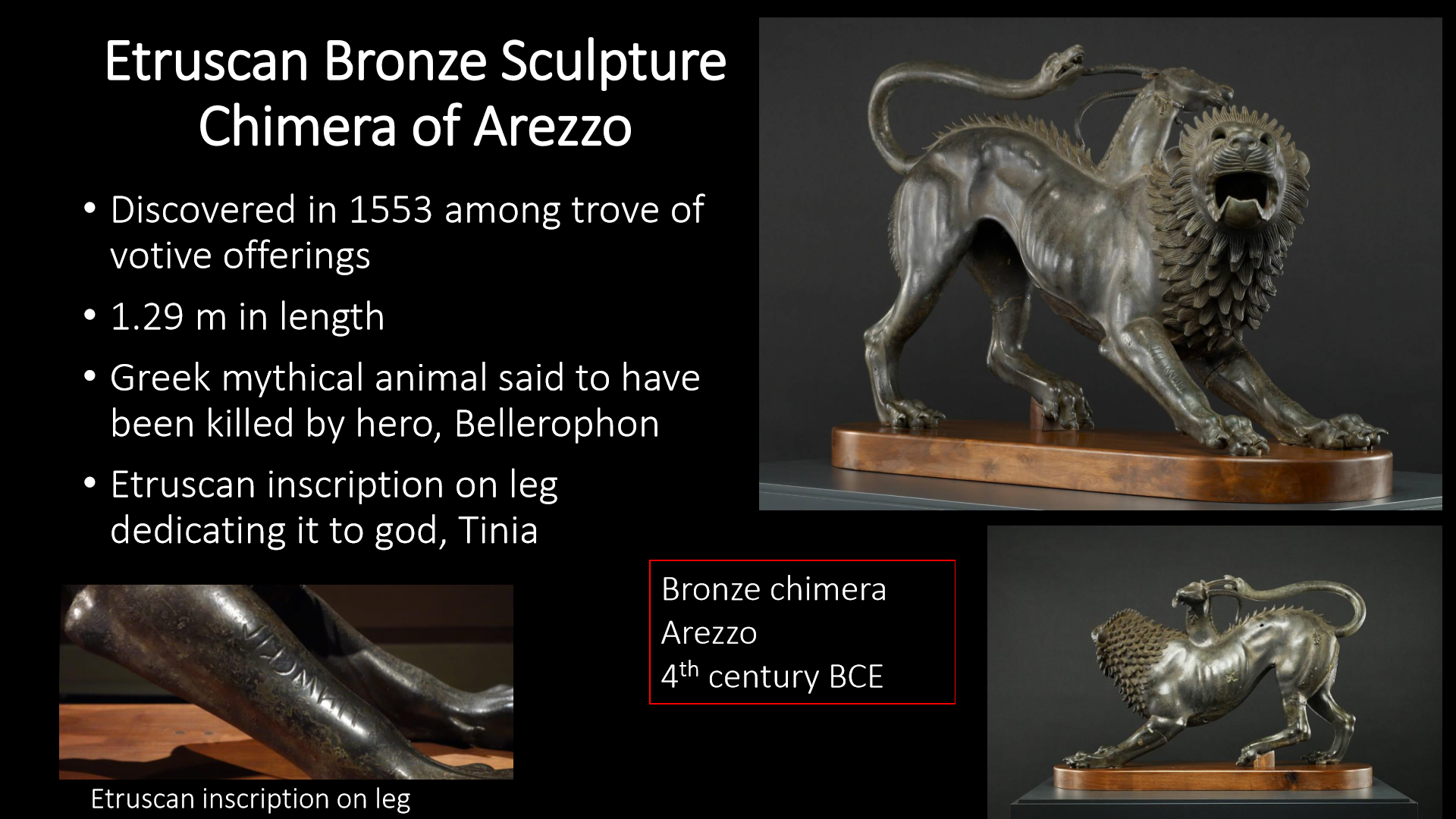
chimera of arezzo 4th century bce
the snake was not originial when found, there it was added later on.
what does the inscription on the leg of chimera represent.
the inscription is a dedication to the struscan god tinia.

bust of brutus, 300 bce
verism- depiction of wrinkles to make it more human like.
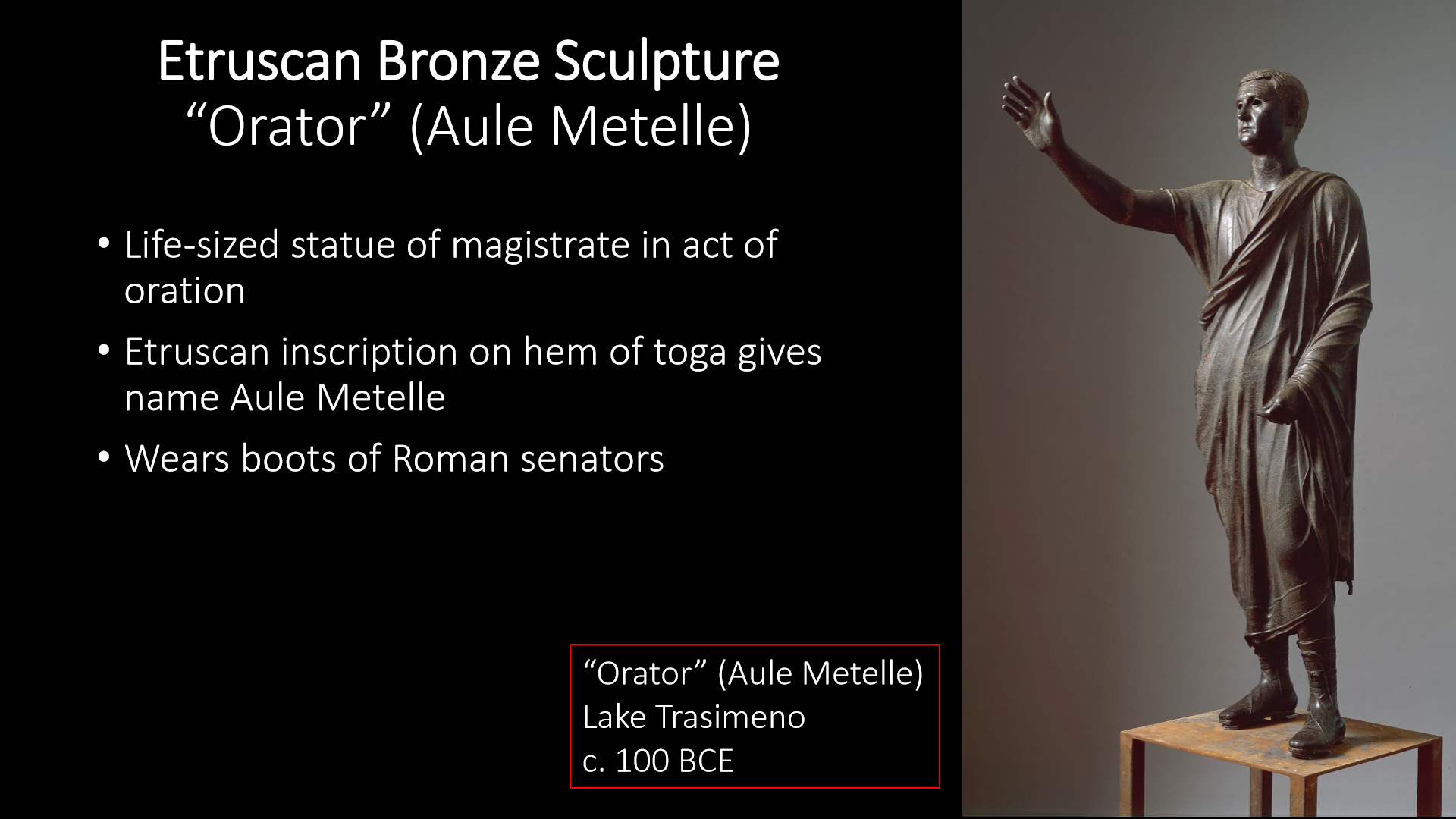
orator 100 bce
from lake trasimeno.
wearing a toga and boots to show he is a roman senator.
shows beginning of absorption of etruscan art by roman art.
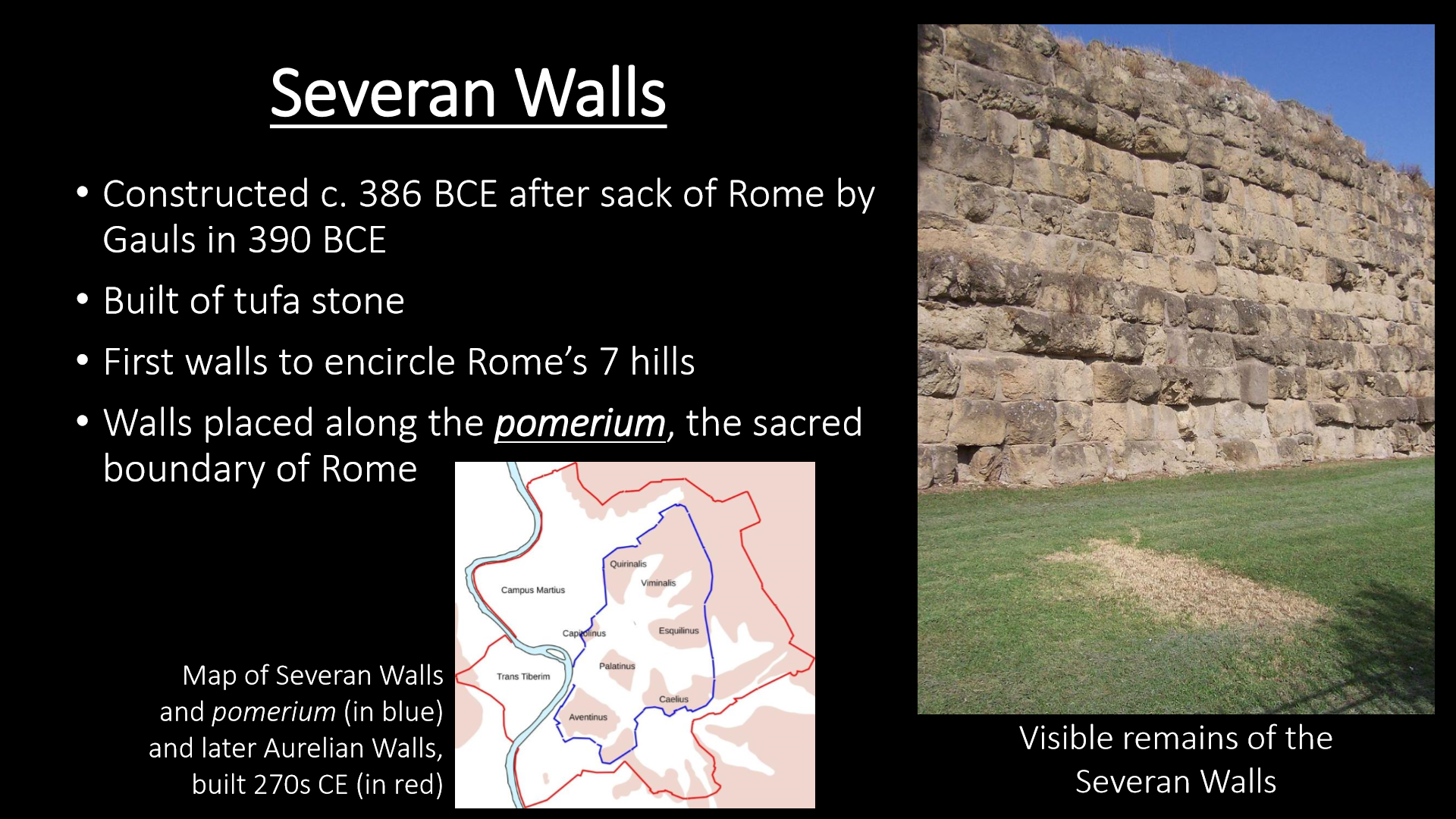
severan walls
built in 386 bce
made from tufa stone.
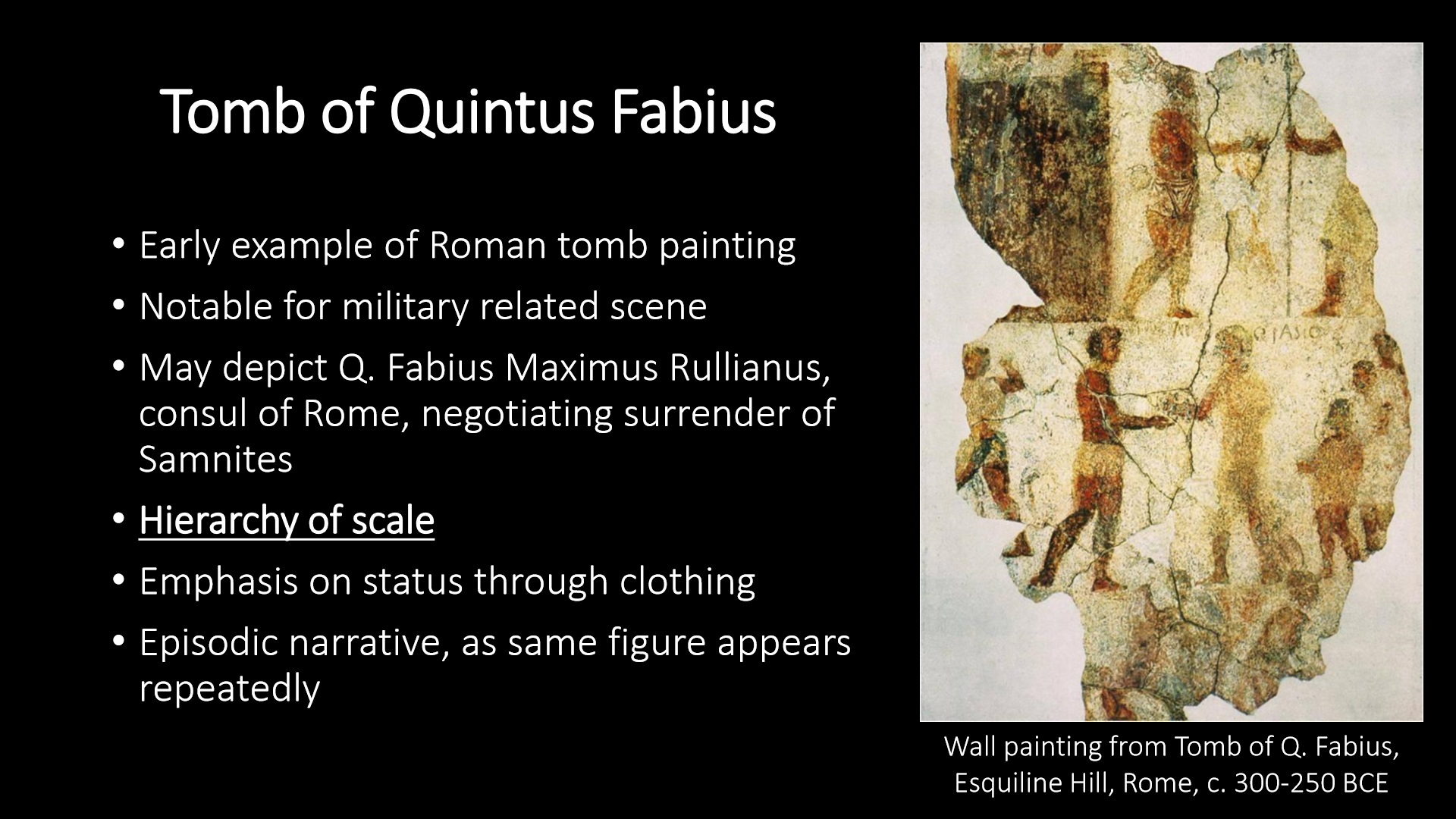
tomb of quintus fabius 300-250 bce
the earliest depiction of tomb wall painting.
from esquiline hill.
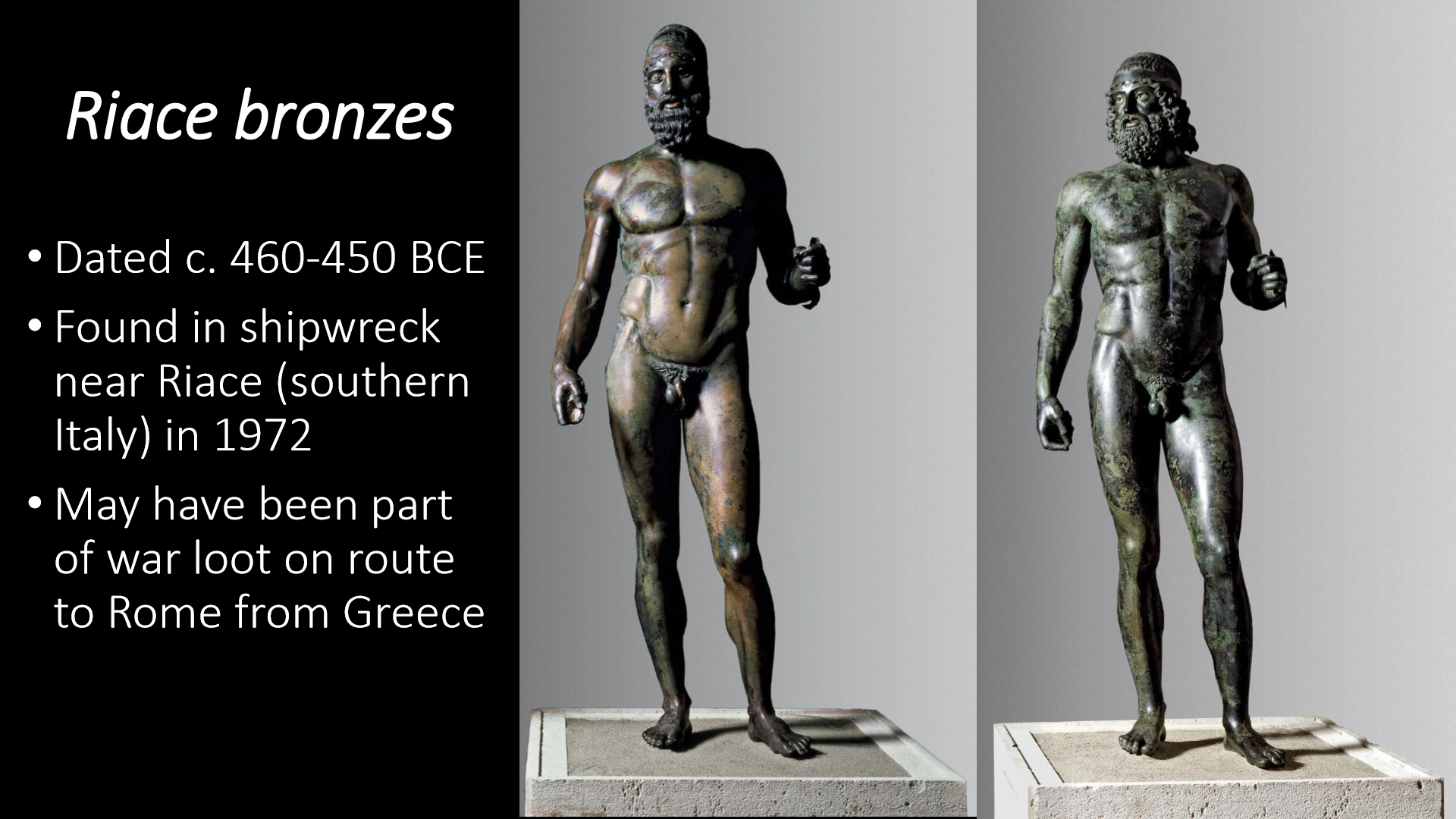
riace bronzes 460-450 bce
apart of roman war loot from greece, froma shipwreck.
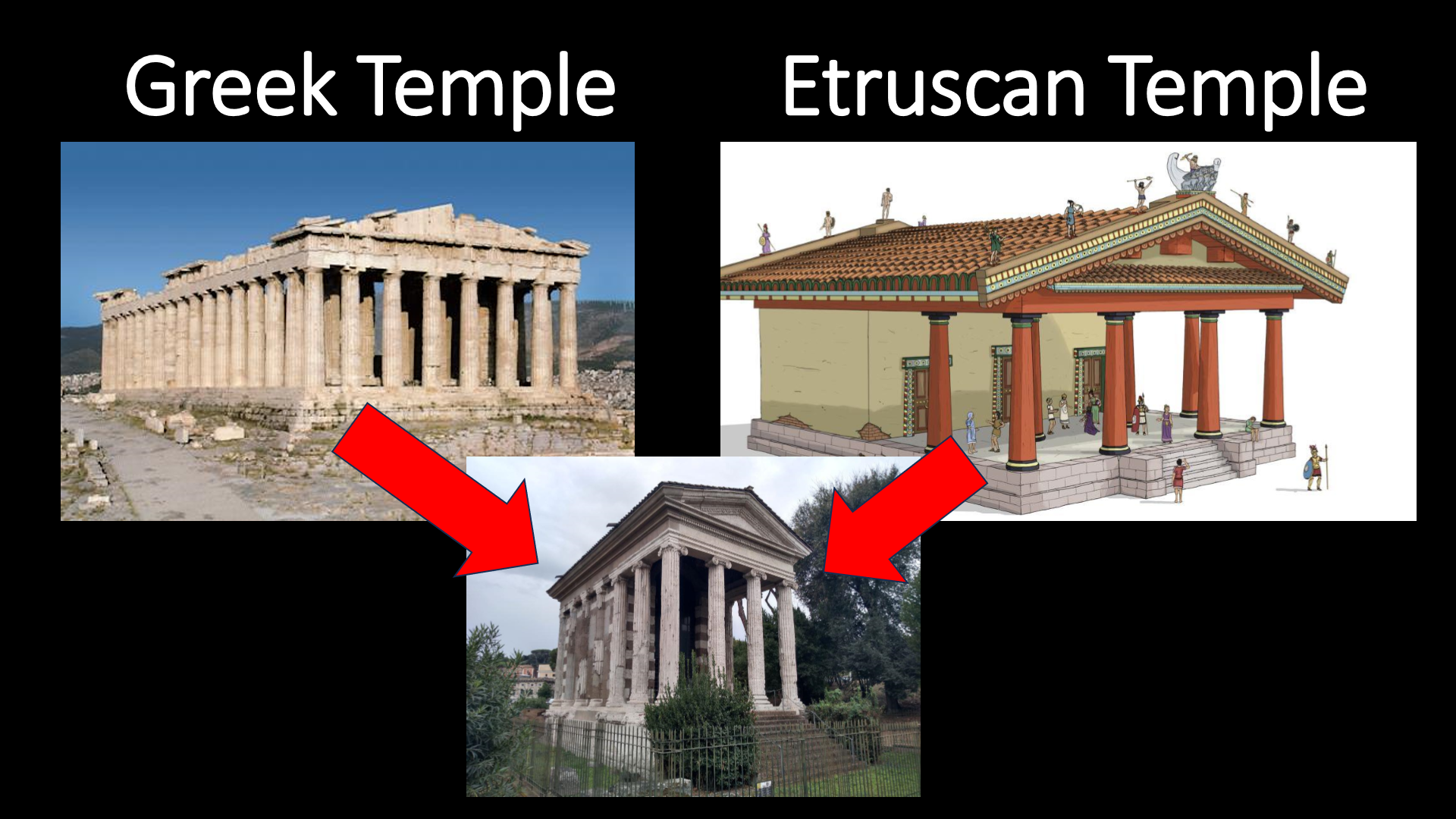
temple of portunus 150 bce. explain how the style of the temple.
the high podium is from etruscan style, and the columns all around are from greek style.
pseuodoperipteral
columns all the way around with engaged columns at the back.
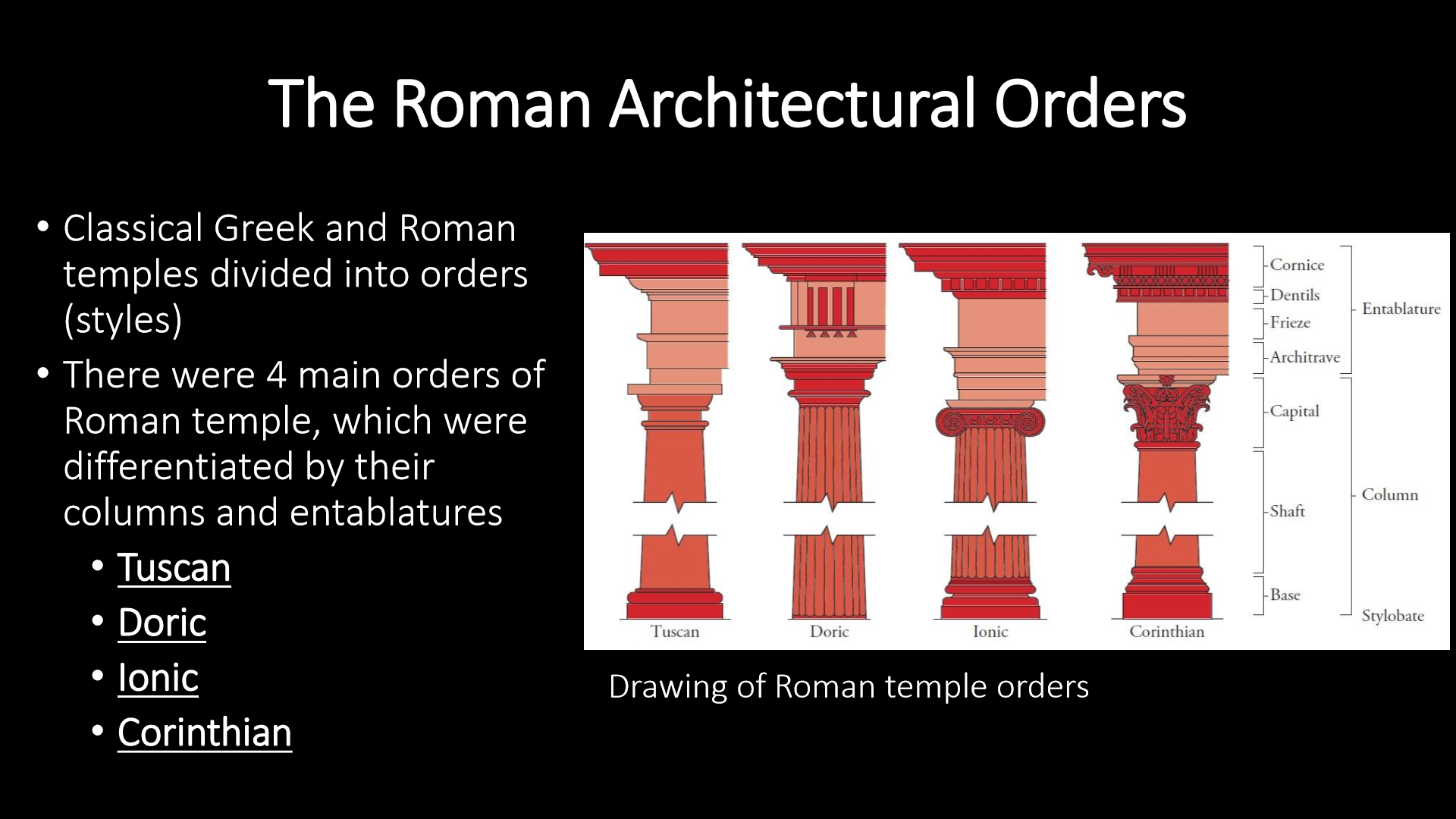
what are the 4 roman architectural orders
tuscan, doric, ionic and corinthian.
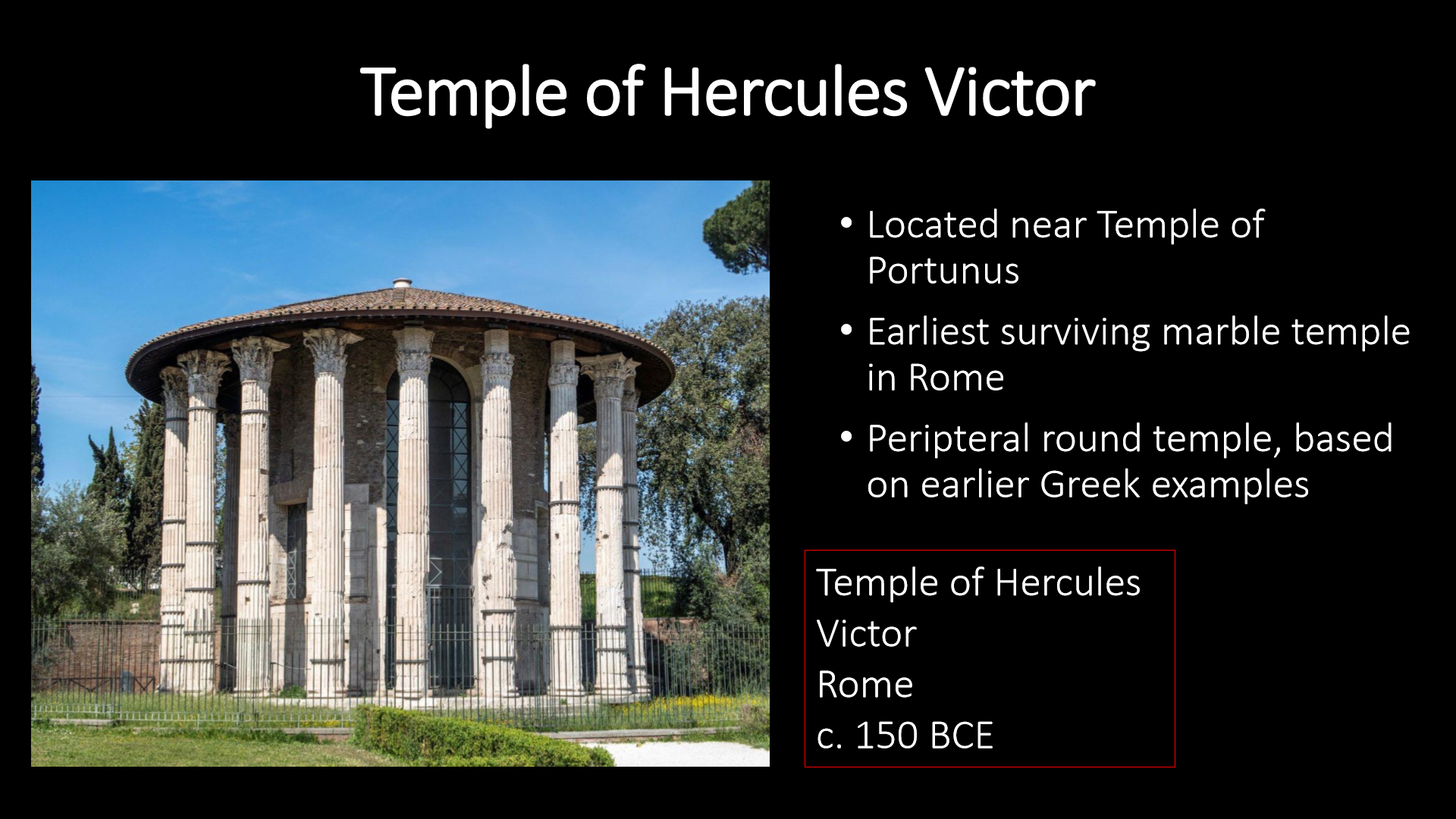
an example of a corinthian style temple.
temple of hercules victor, 150 bce (earliest surviving marble temple in rome.
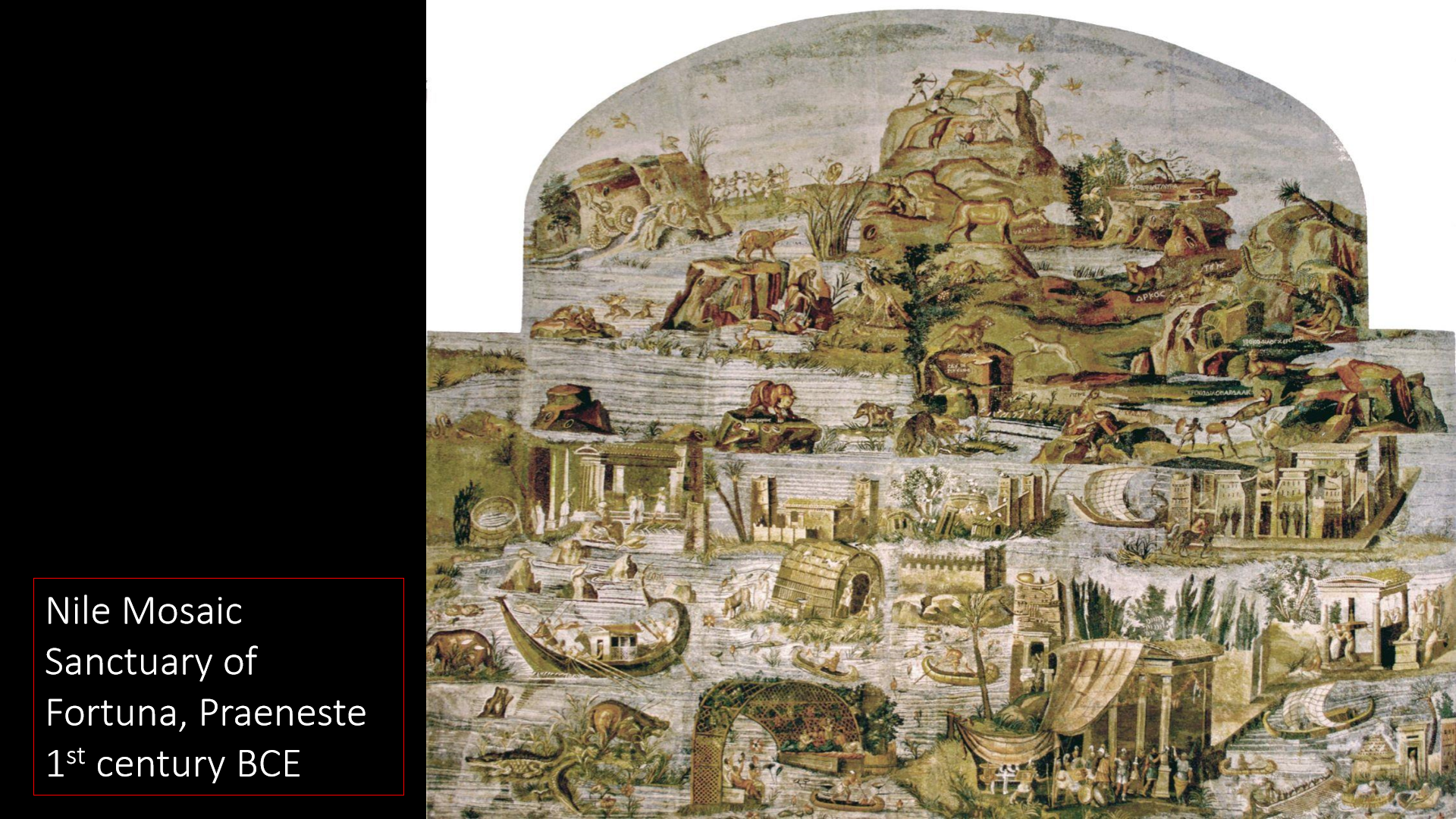
nile mosaic sanctuary of fortuna, praenaeste
mosiac is stoned carpets that are made by stoned cubes or glass.
this mosaic is very large and is modeled by an earlier painting from an hellenistic artist.
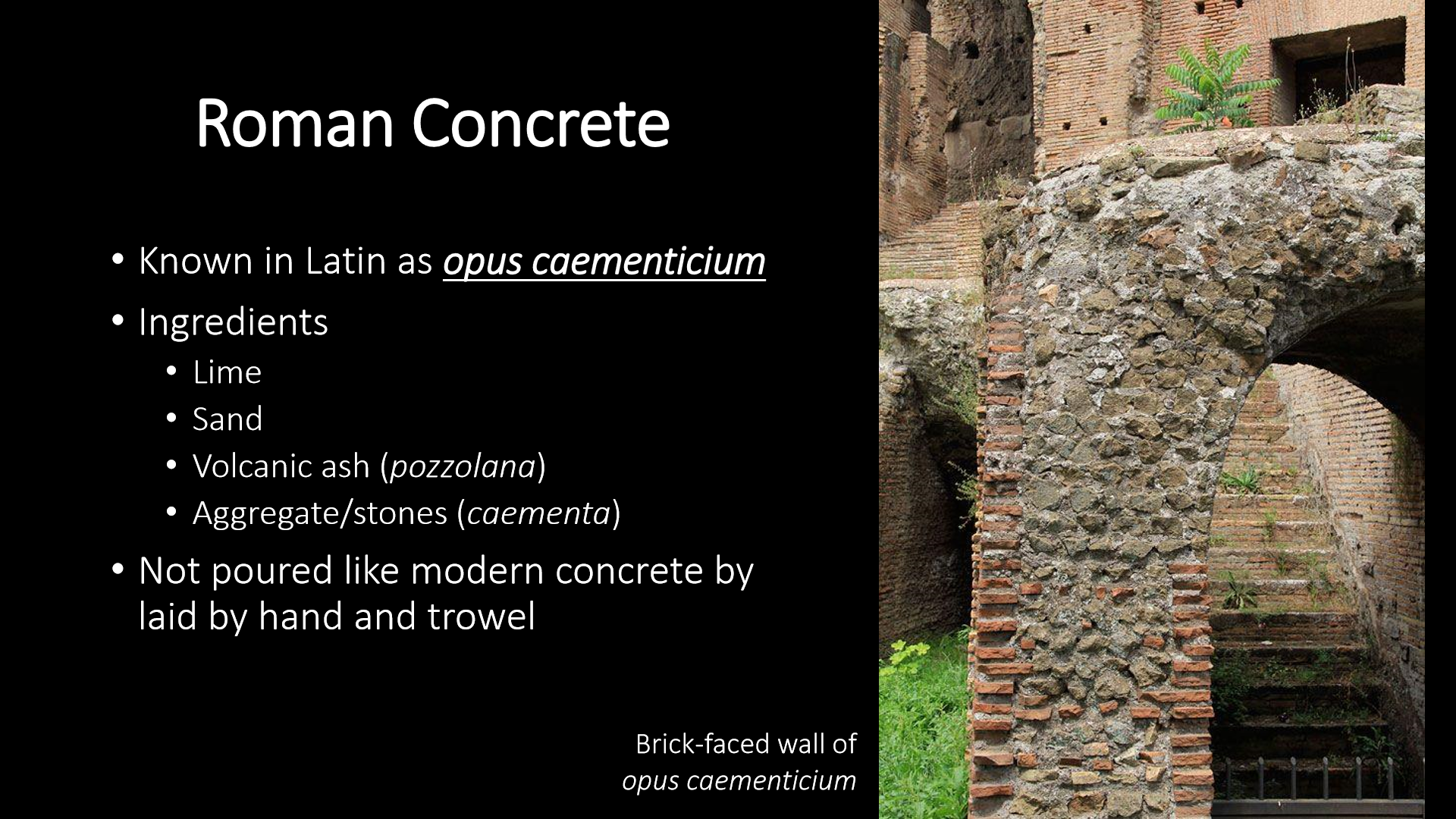
roman concrete or opus caementicium
the names means it is placed by hand
roman building techniques
opus incertum- irregular stones with no pattern.
opus reticulatum stones were cut into pyramid shape and placed in the wall.
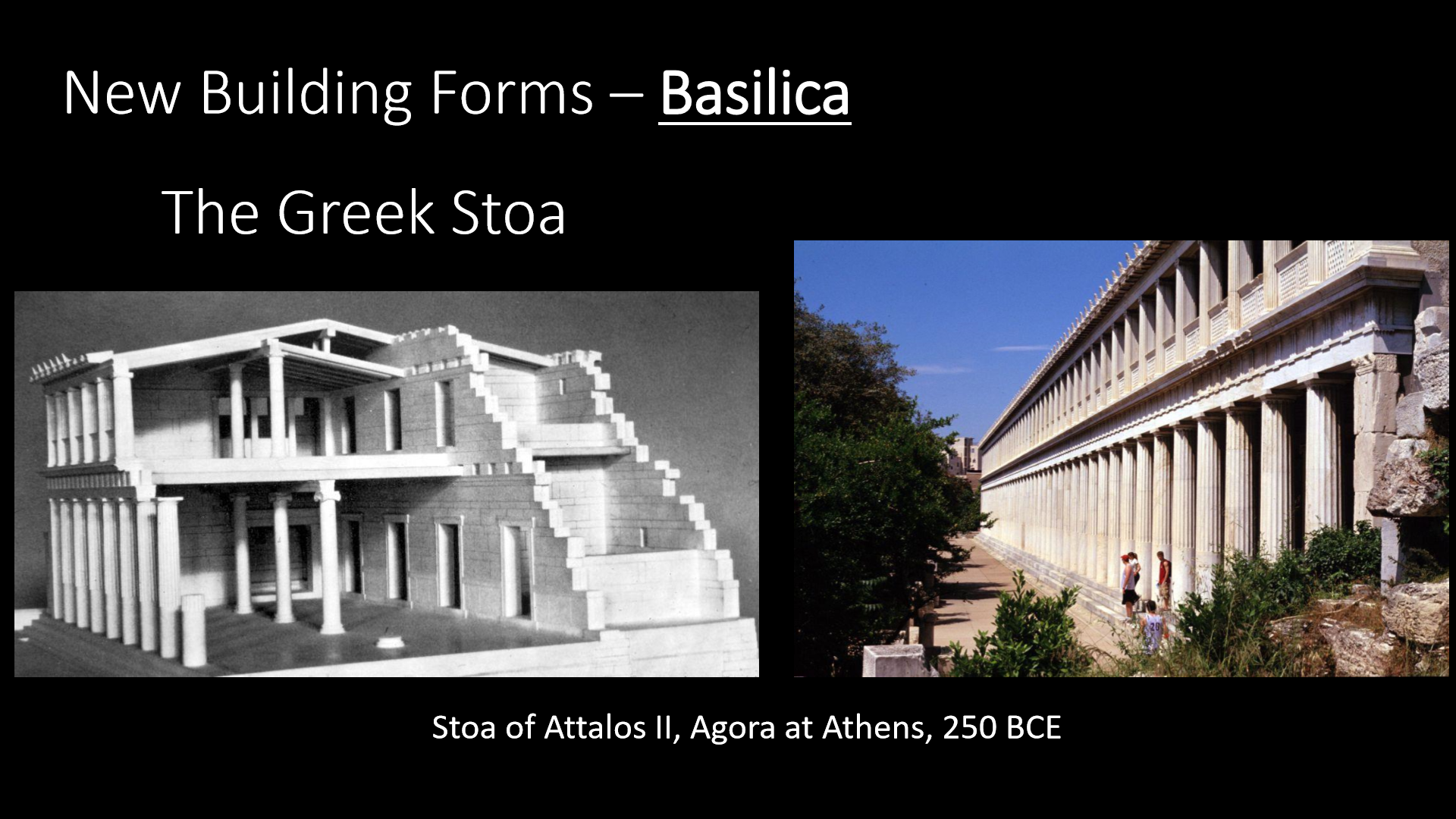
basilica
used for indoor assemblies.
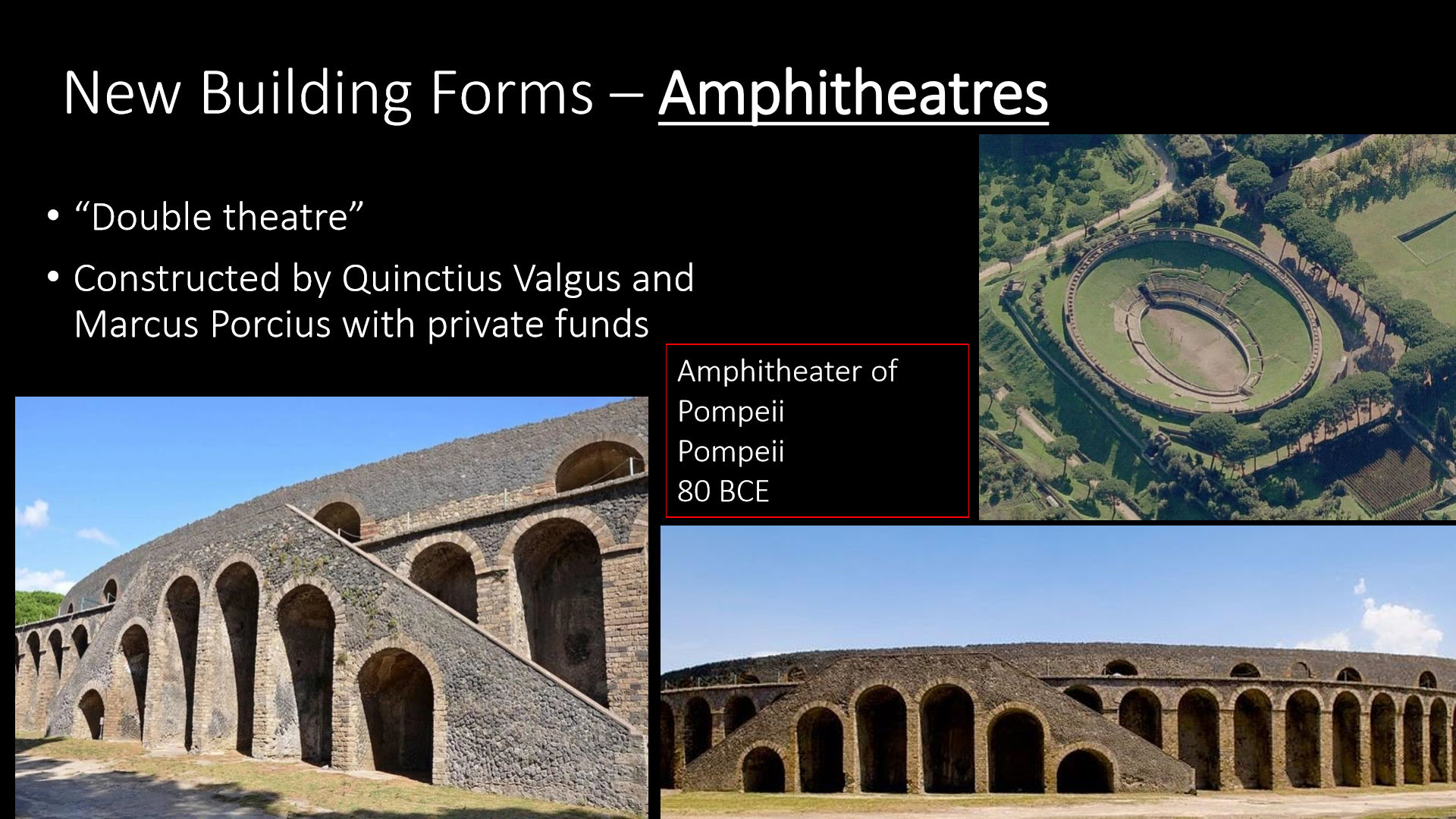
amphitheatres
an example of an amphitheatre is the one built in pompeii in 80 bce
a theatre within a theatre.
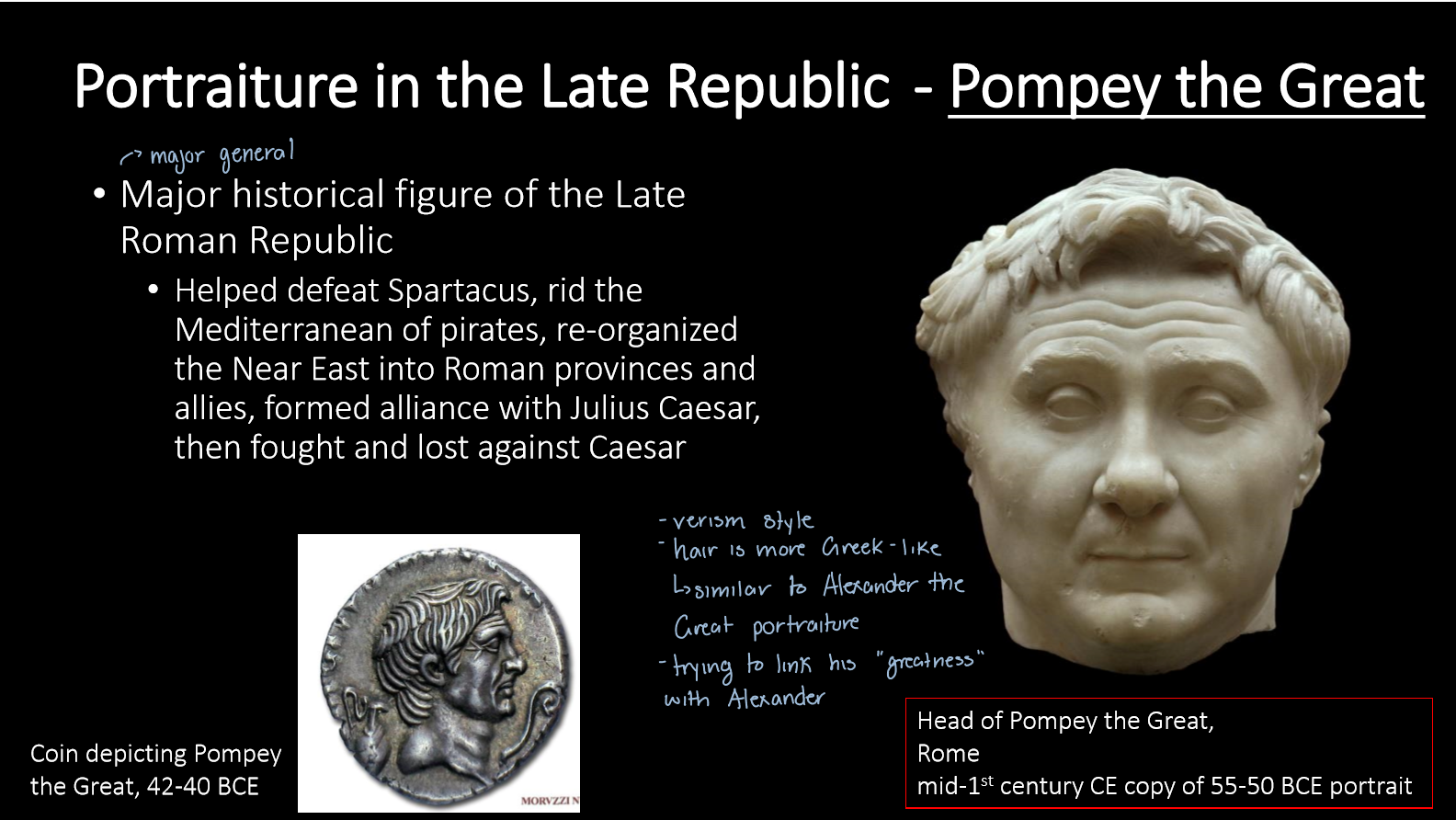
pompey the great
a major general in late roman republic.
aided in defeating spartacus and formed an aliiance with julius but fought him later and lost.
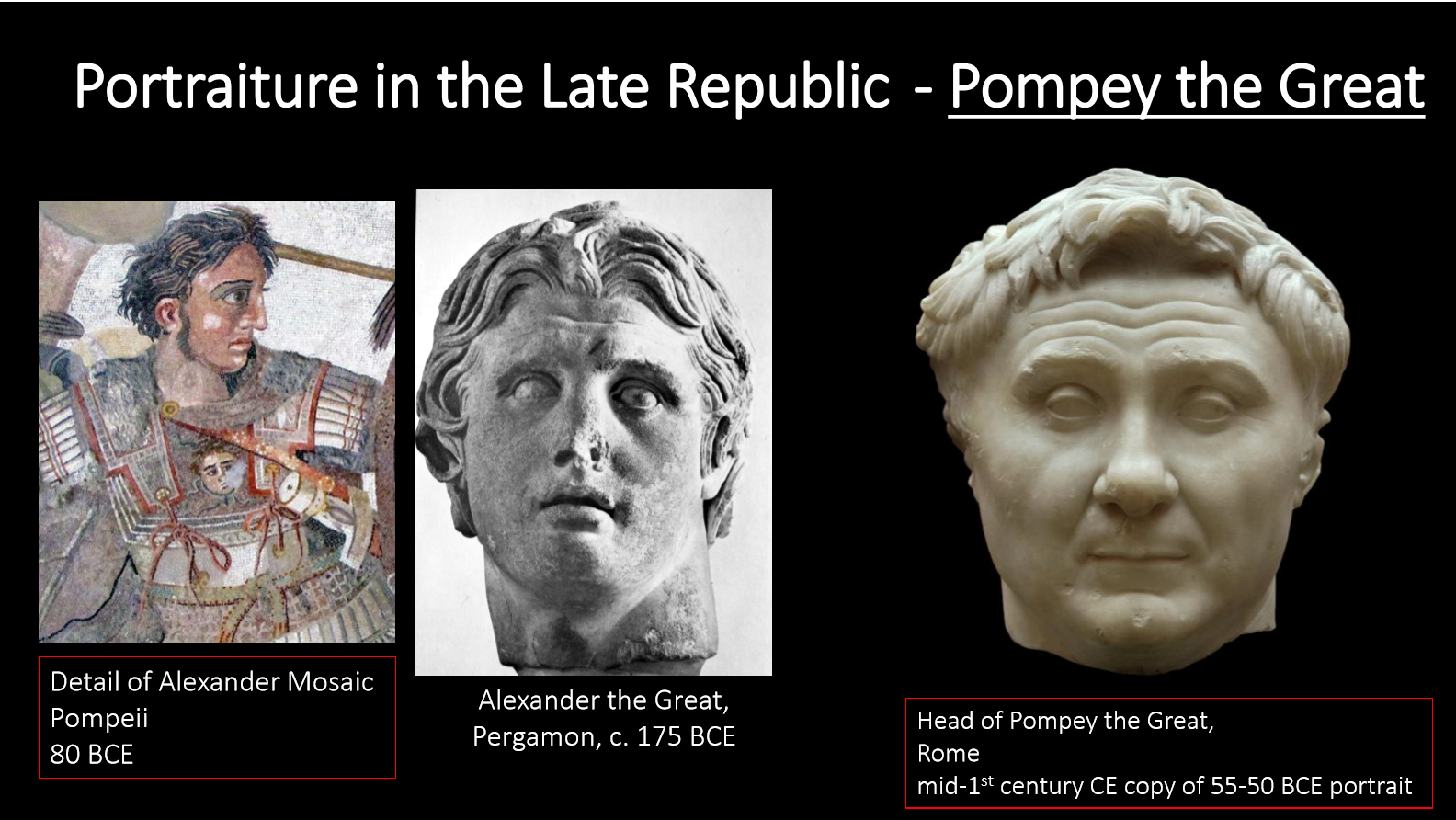
head of pompey the great mid 1st century bce
has a veristic style.
the hair is greek like and similar to alexander the great’s hair in the nile mosaic.
julius ceasar
he conquered gaul and then went on to attempt to conquer rome.
he defeated pompey in civil war. (even though they had an alliance).
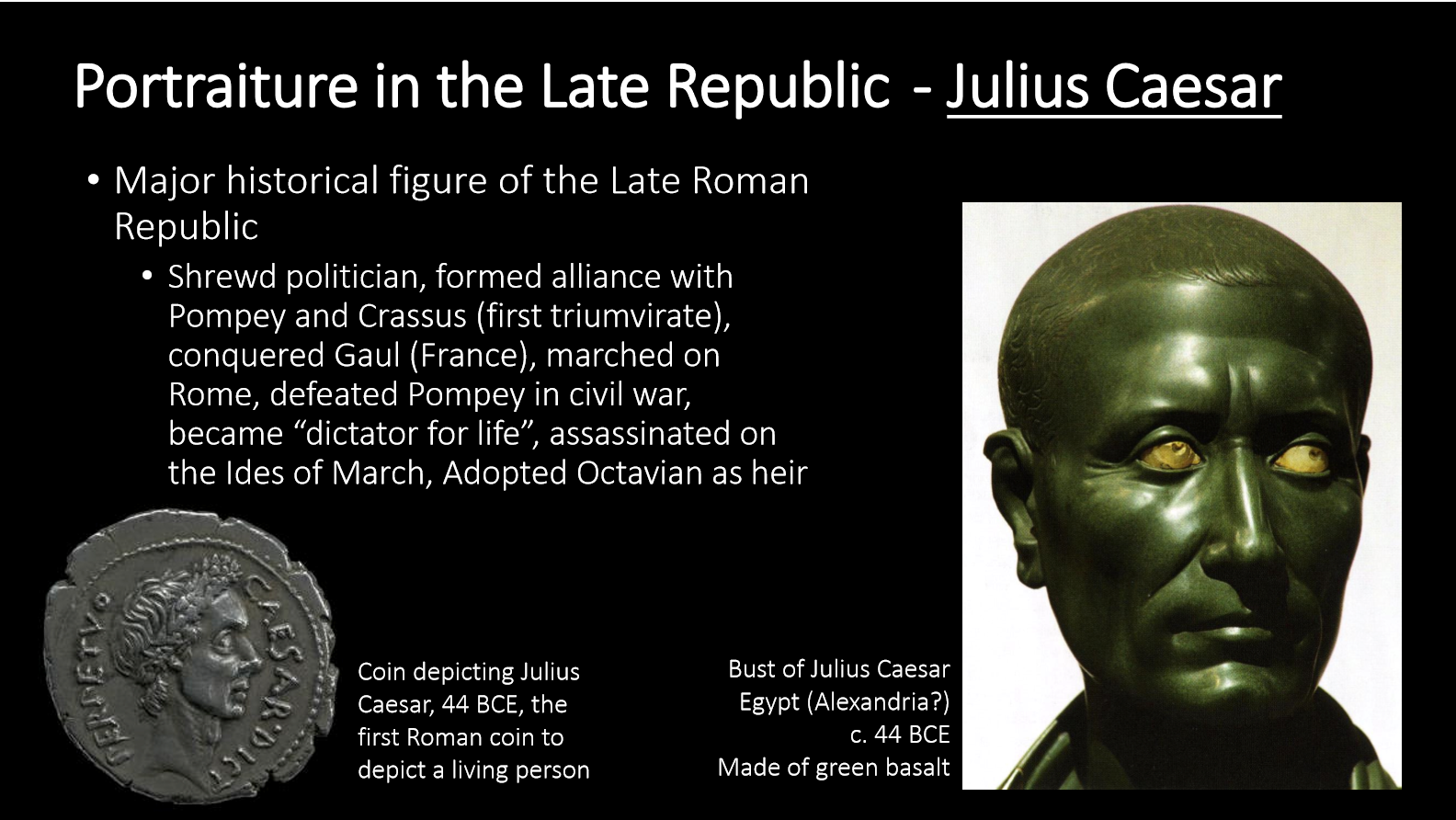
bust of julius ceasar and his coin
made of green basalt in egypt 44 bce.
the coin that had is face was the first roman coin to have a living person. 44 bce.
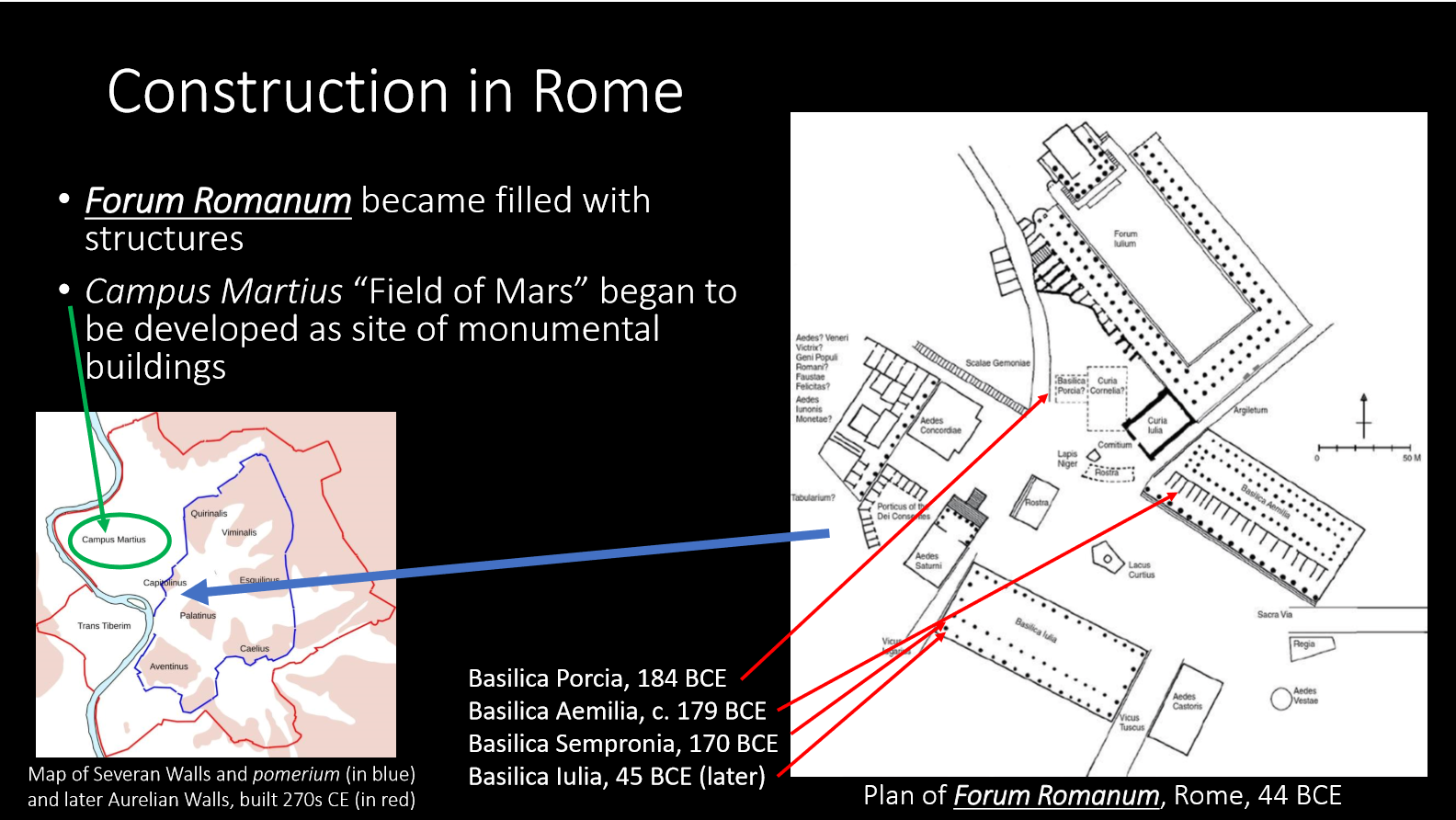
forum romanum
a forum that has structures or basilica inside of it.
theatre of pompey
ceasar was killed here, because weapons were not permitted inside the pomerium.
it was built in the campus martius and it was the first stone theatre in rome.
forum of ceasar
built next to the forum romanum.
had the temple of venus genetrix in it because he believed that venus is his ancestor.
this started a trend of emperors building their own forums.
Augustus
the first emporer of rome and his reign marked the end of the roman republic.
lived 63 bce -14bce and was adopted by julius ceasar.
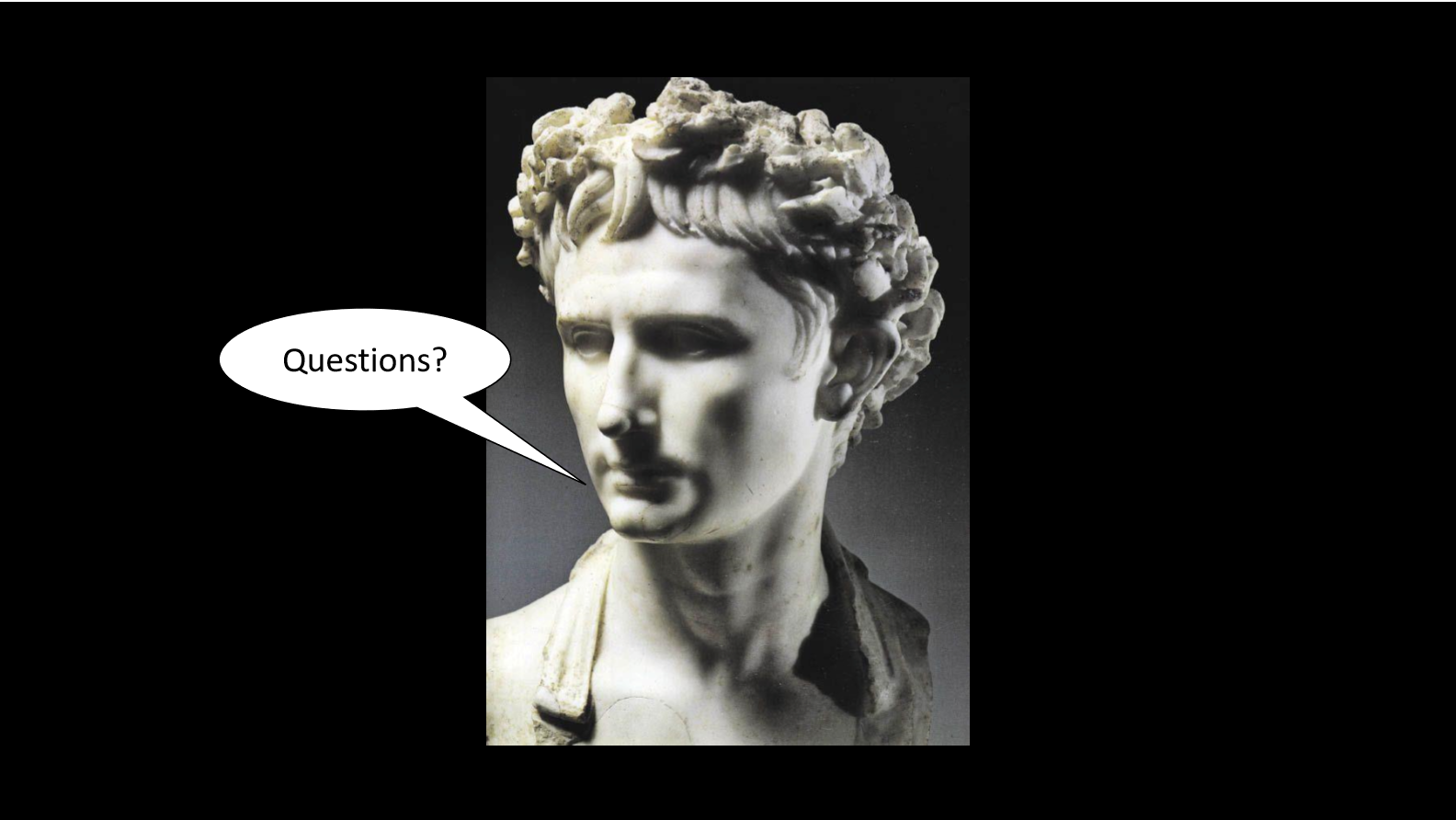
bust of augustus
he was 18 in this.
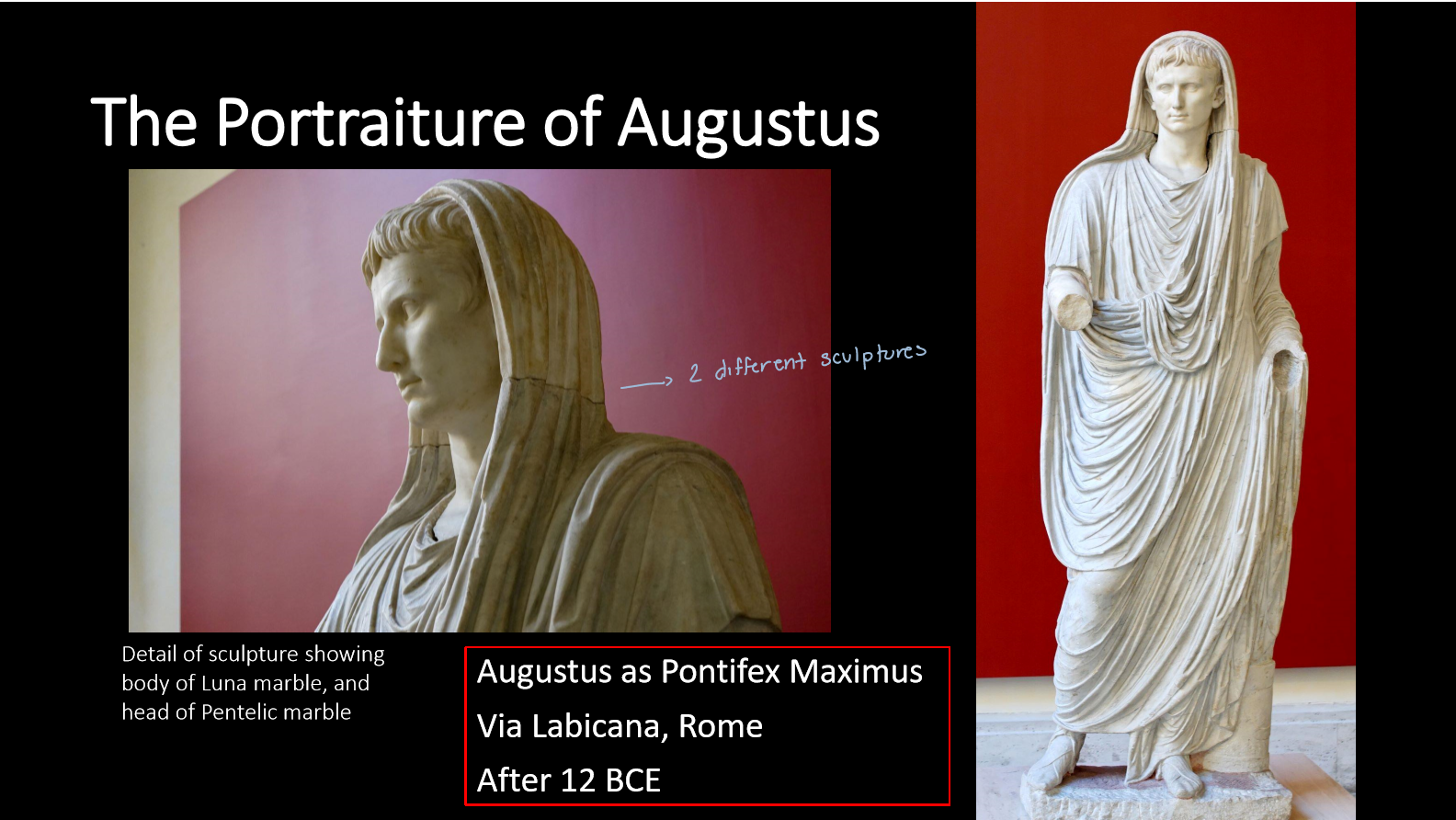
Augustus of via labicana
this protraiture shows augustus as a pontifex maximus (a priest).
he is wearing a toga and shoes that only elites wear or patricians.
he depicted as a young man in this with wavy hair.
the head (pentellic marble) and the body (luna marble), are two different structures.
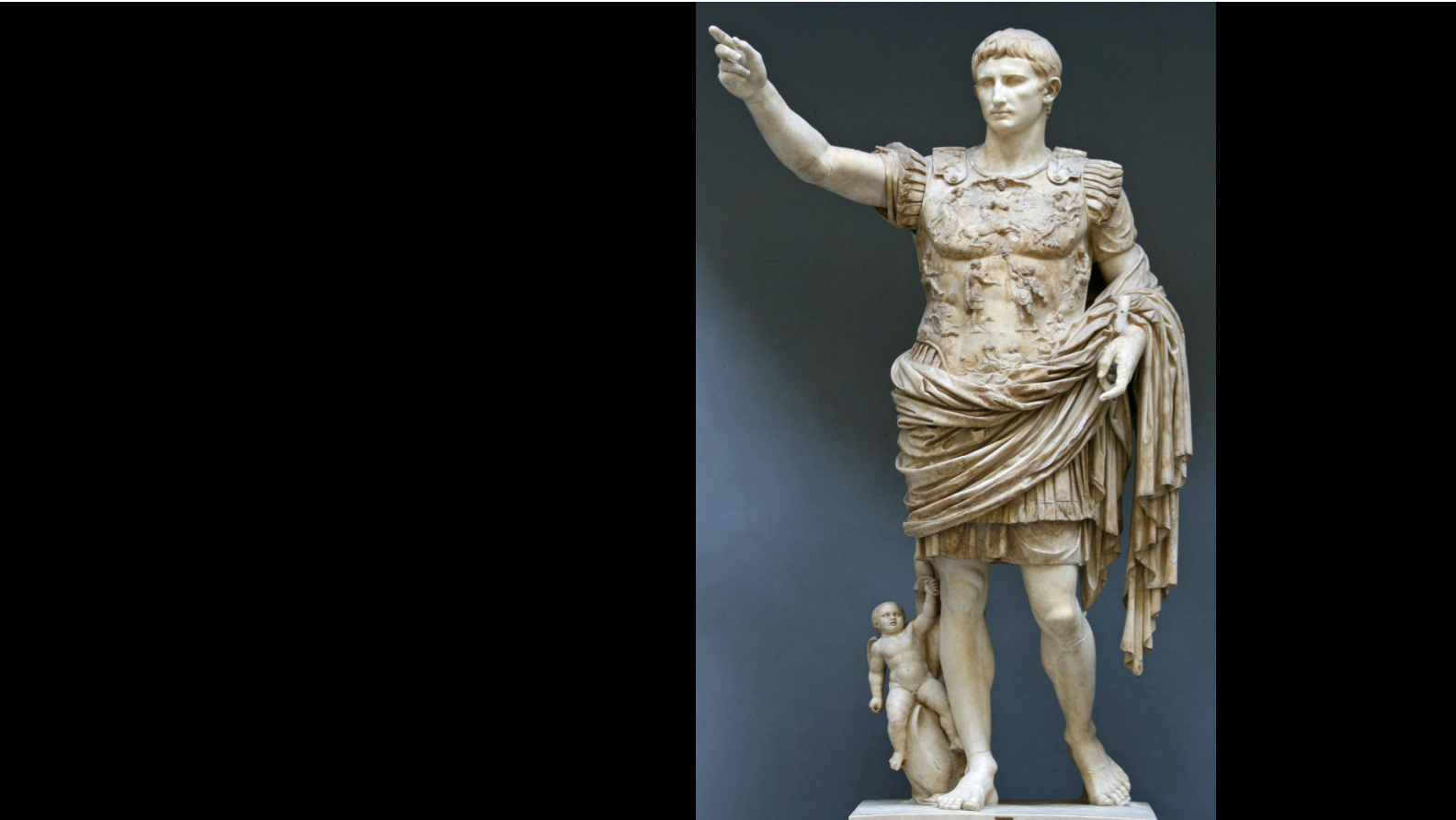
augustus of prima porta 14 ce
in this sculpture he also is depicted as young.
his stance in this is greek style and the stance represents a victorious general.
there is a representation of cupid at his feet because ceasar believed venus was his ancestor which makes augustus part of the venus lineage.
there is no shoes and that shows that he is divine.
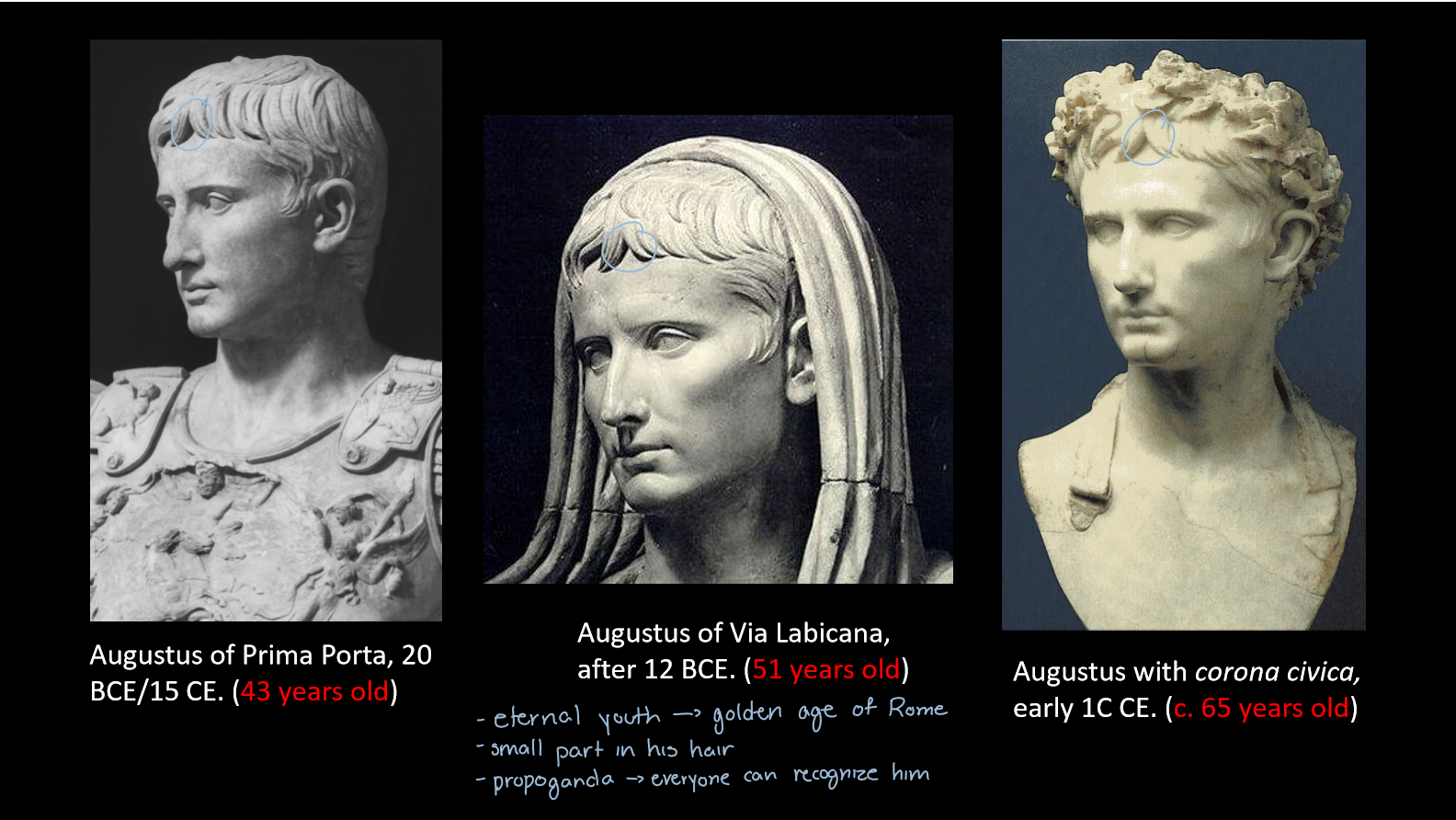
explain
he looks the same in all of the protraiture to represent eternal youth and the golden age of rome.
his face looks the same in everything (including the small parting in his hair) because of propaganda so everyone can recognize him.
polychromy
the art of paininting in several different colors.
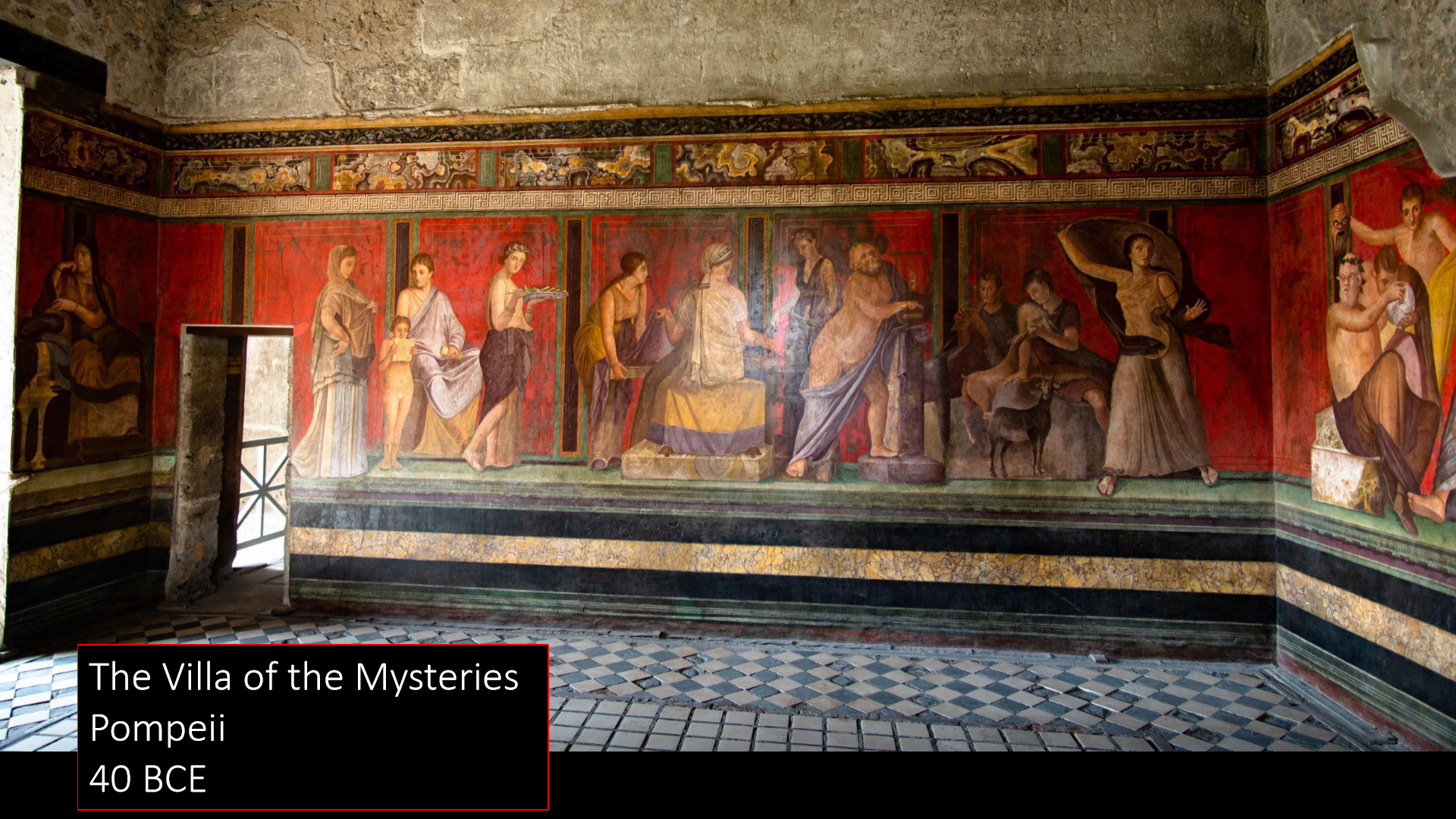
the villa of mysteries, pompeii 40 bce
a second style wall painting that shows depth in the painting.
theres two people in the painting that seem to be looking at the other section of the wall painting.
it seems to portray some sort of initiation ceremony.
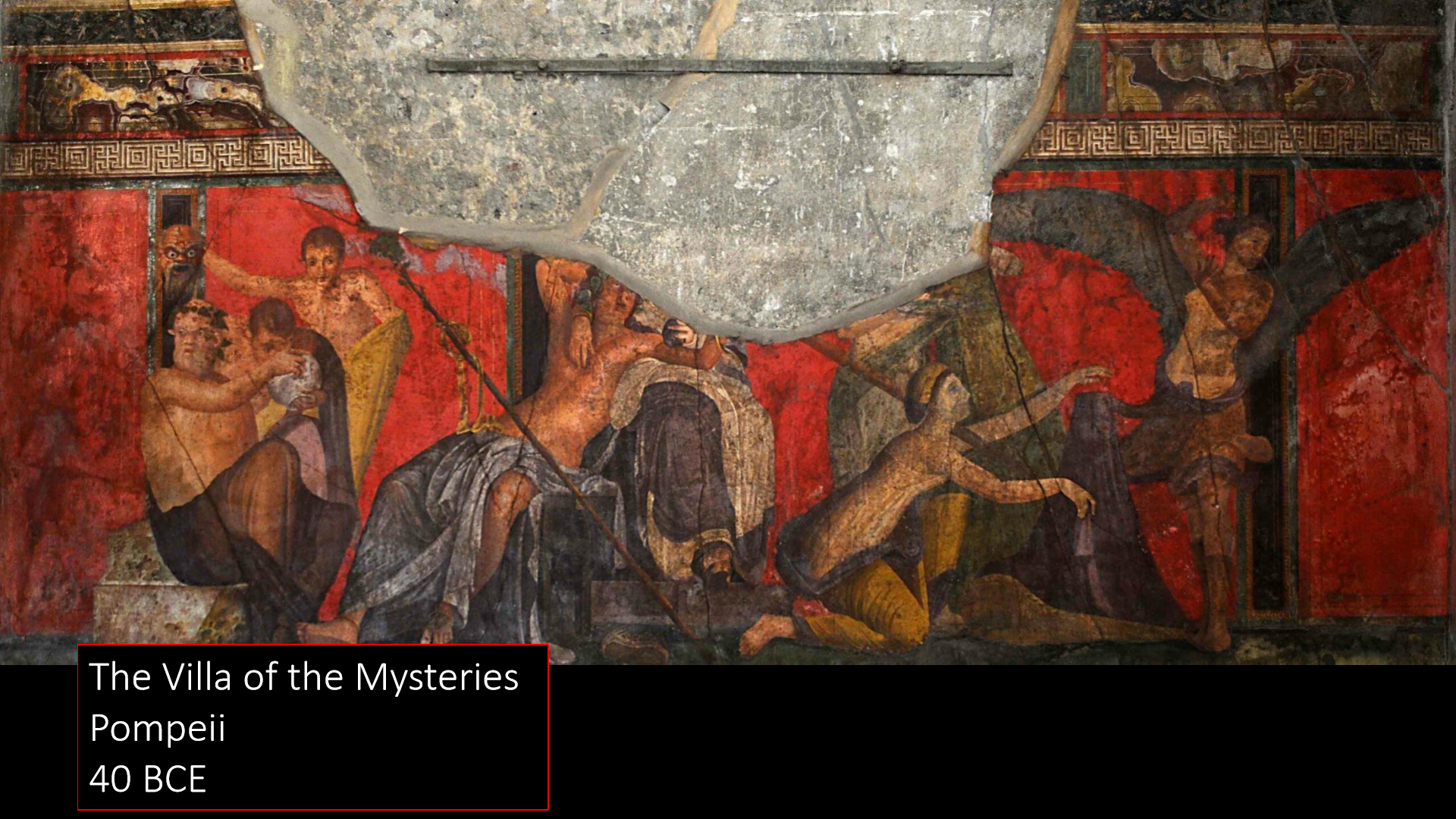
explain the person looking the jar and the winged creature.
the creature is a vanth which represents periods of transition.
the person looking in the jar is supposed to see a reflection of himself but they will see the scary mask being held up behind him instead.
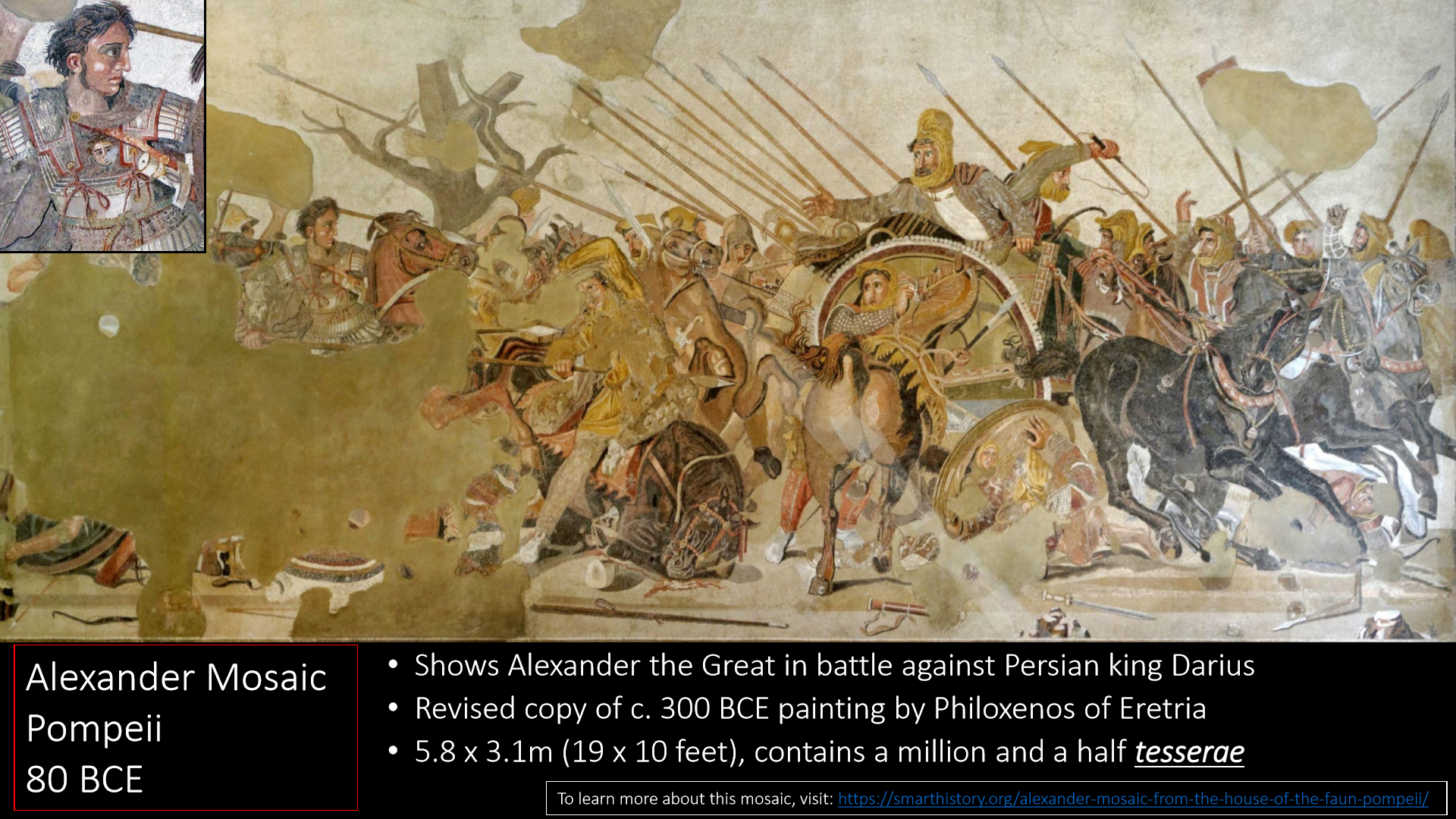
alexander mosaic pompeii 80 bce
alexander in battle against the persian king darius.
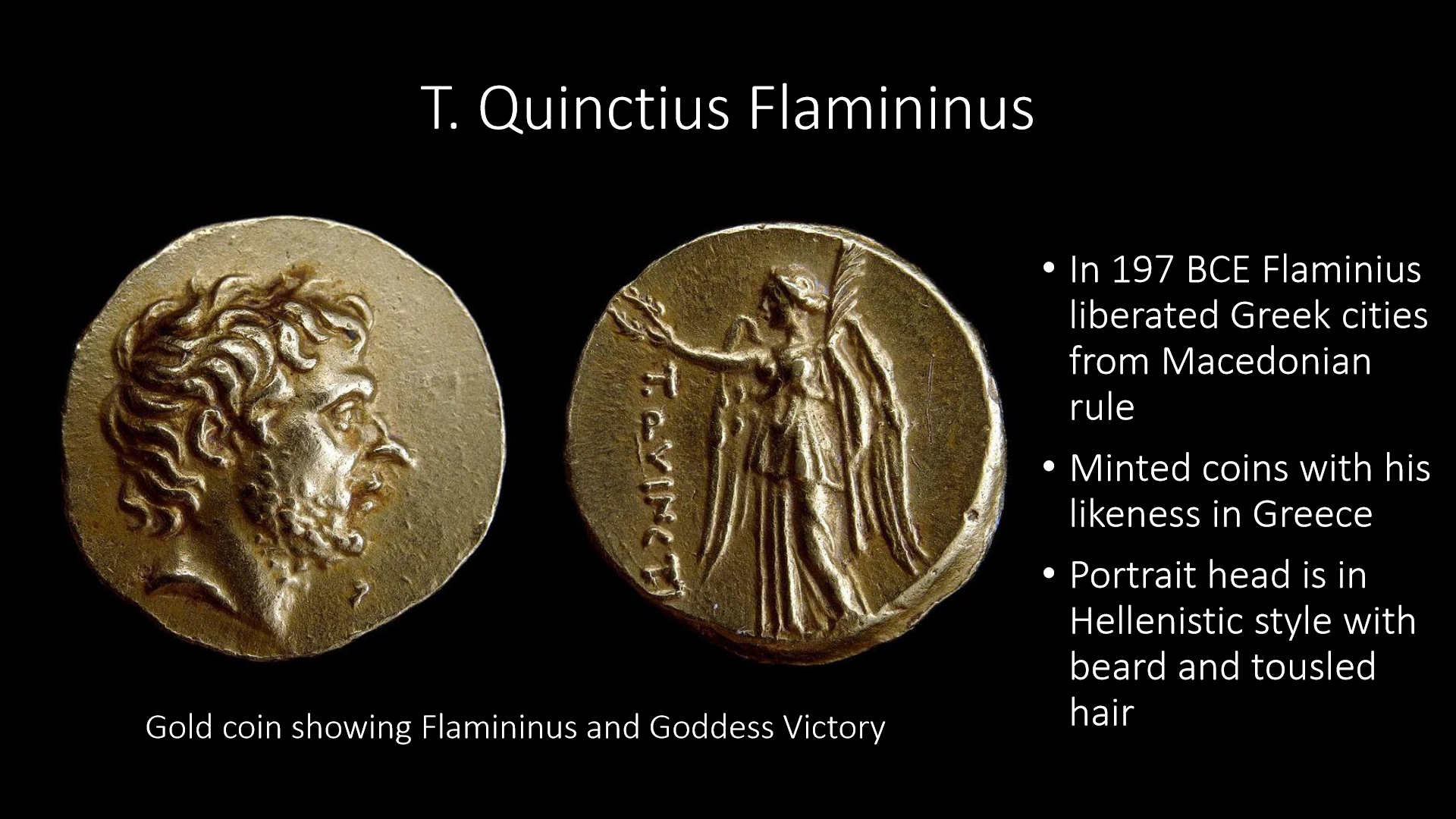
flaminius coin 197 bce
he liberated greek cities from macedonian rule and minted his face on coins because it was allowed to that in greece.
protrait of livia
from arisnoe, egypt in early 1st century ce
her protrait is similar to augustus in the sense that it has eternal youthfulness. livia is depicted as way younger in the protrait than she actually is.
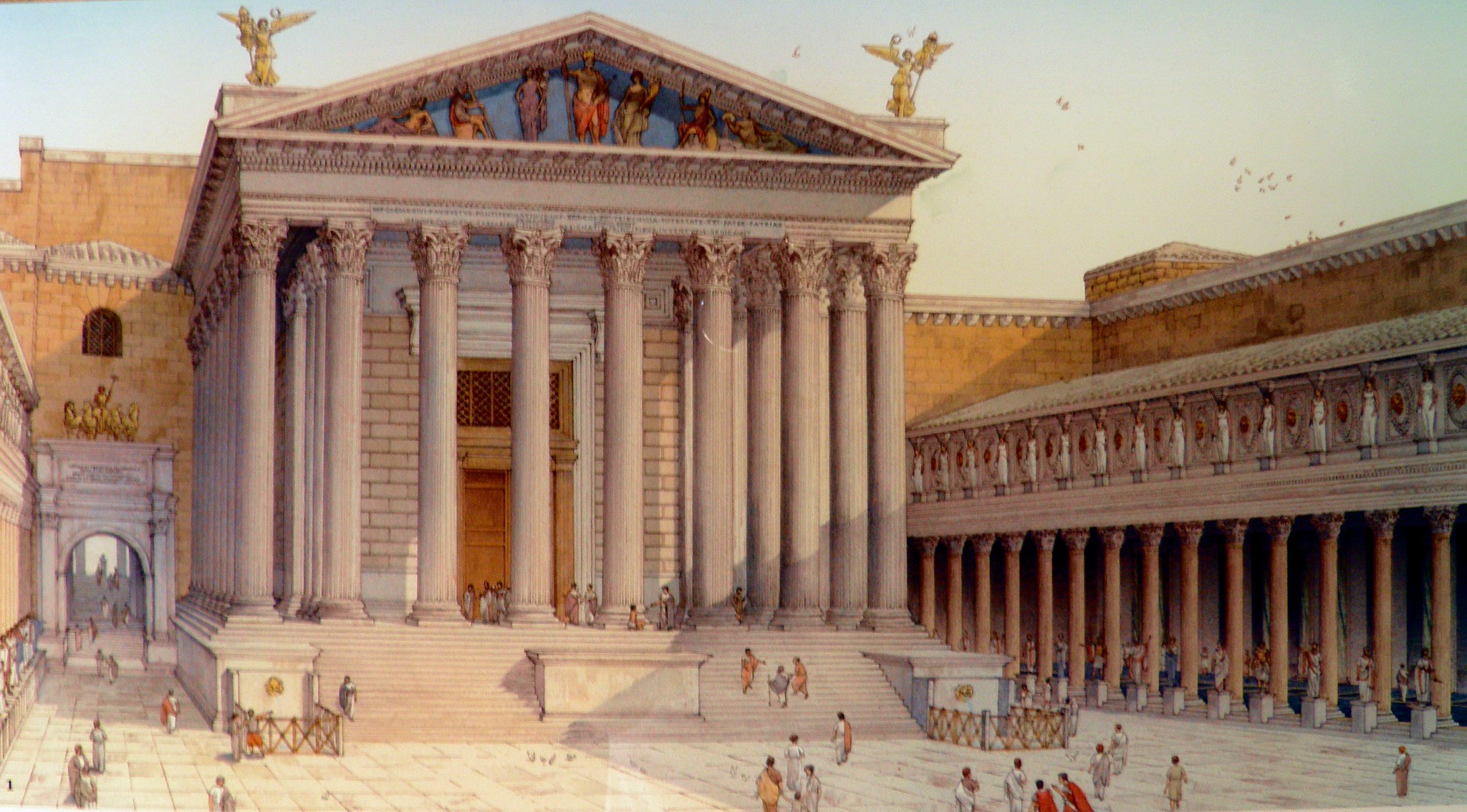
what is this and name the significance
forum of Augustus
rome 2 bce
a billboard that represents augustus the next inheritor of Rome.
mausoleum of Augustus
rome, started in 28 bce
it was designed to be a monumental tomb that holds augustus remains.
the gate has Egyptian obelisks and two bronze columns with inscriptions of res gestae divi augusti.
sundial of augusti
large sundial using rose-granite obelisk brought from egypt as the gnomon (to cause a shadow).
near arca pacis
a monument that marked the roman triumph over egypt. Agustus triumph over egypt.
arca pacis augustae/ altar of augustan peace.
the altar is monumentalizing the end of civil wars and peace.
pleged in 13 bce and inaugurated in 9 bce
in the campus marius near the sundial ausgusti and the mausoleum of augustus.
made of luna marble and was used for sacrifices.
it was later rebuilt by musolini because he wanted to recreate rome.
the panels of the arca pacis
south frieze panel with Augustus gens:
depicts Augustus wearing a toga (he is represented as pontifex Maximus)
citizens are shown because there is people wearing a toga.
there is children in this because augustus wanted people to have more children.(propaganda for fertility).
before this children were not displayed in art.
depiction of a big family in order to encourage to have more kids and to show that woman with kids have more rights.
the people in this family shown is augustus heirs and lineage.
the policies the arca pacis introduces
fertility and family (shown in south freize)
marriage legislation laws
dynastic succession
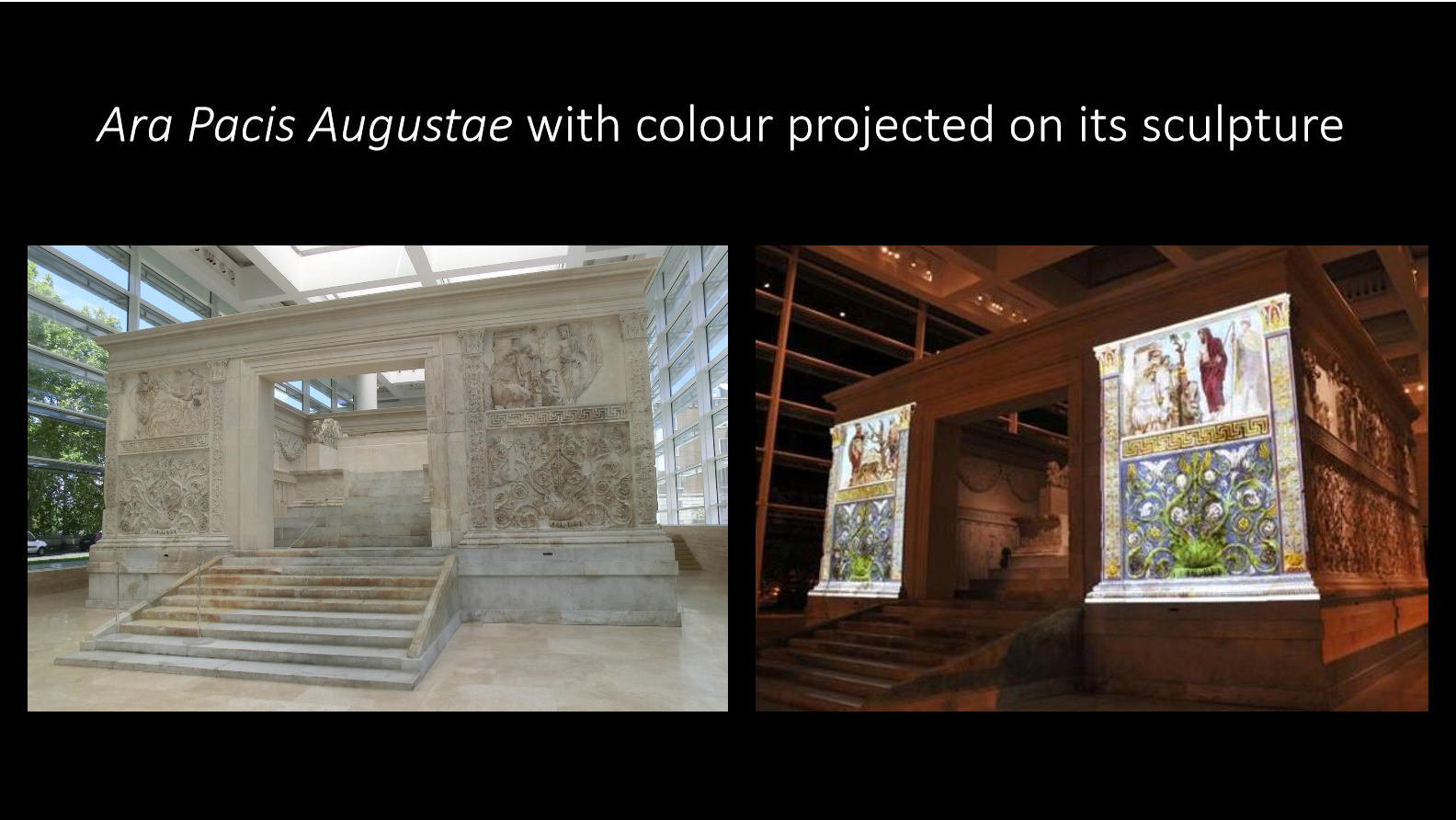
when was the arca pacis made and where? what is the 4 allegorical panels?
pledged in 13 bce and put up on 9 bce
Rome.
Aeneas, romulus and remus, Roma and Tellus
third style wall painting
it is a ornate style.
panel paintings and monochromatic olanes of colour with intricate details.
painted on closed off walls and the panels are very large.
Egyptian motifs become more common in the 3rd style.
very detailed and this style of painting was used as a way to show off their knowledge and education.
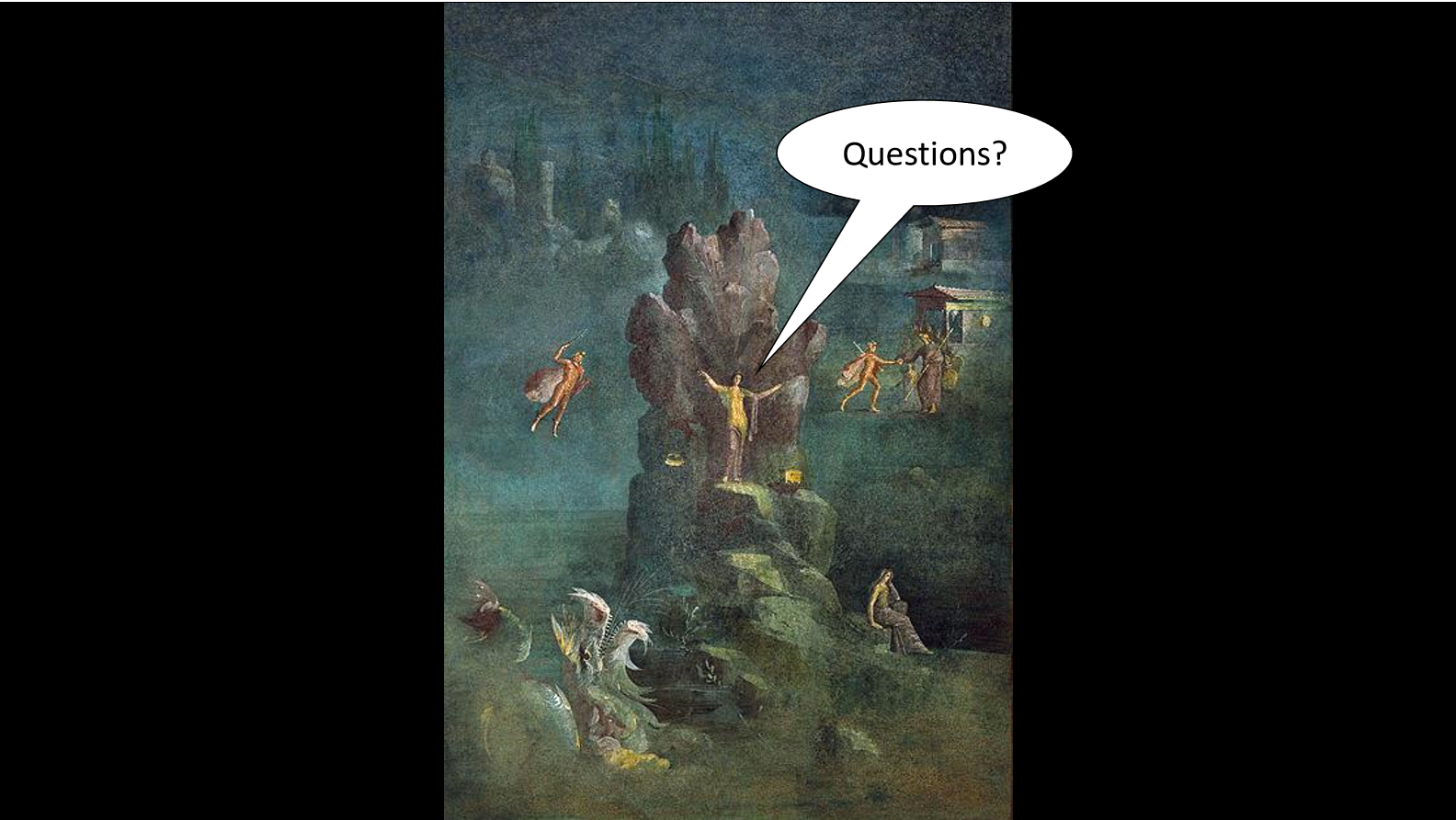
what style of painting is this and where is it in?
thrid style painting or ornate painting.
villa of agrippa posthumus boscotrecase 10 bce.
pax Romina
roman peace
theory of romanization and why it might be problematic.
provinces gradually adopting roman art and culture.
Romanization happened because of colonization and romans themselves were influenced by etruscans (their culture isn’t entirely roman).
what is the pont du gard?
in nimes, france 16 bce
an aqueduct used to supply the city of Nemausus with fresh drinking water and water for baths.
example of roman art .

maison carree and explain the roman influence it presents.
1-10 ce, in Nimes france
one of the best preserved roman temples in the world
dedicated to augustus grandsons based on the inscriptions.
it is roman through the podium, the frontal steps and the engaged columns in the back.
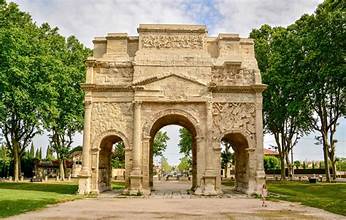
name this and where it is located and date.
the triumphal arch of orange
in france and dated 20 bce
what does the triumphal arch of orange seem to represent
it shows celebration of victory against the Gauls through the depiction of weaponry and decorated garlands.
there is also captives from war depicted.
roman triumph over france.
origin from the name julio-claudian dynasty
julio comes from julius ceasar and claudian is from livia’s first husband tibetius claudius
tiberius
inherited the throne at 56 after augustus.
decreed augustus as a god and built the temple divius Augustus.
protrait of tiberius. Where and date
arsinoe , egypt
4 ce or early 1st century
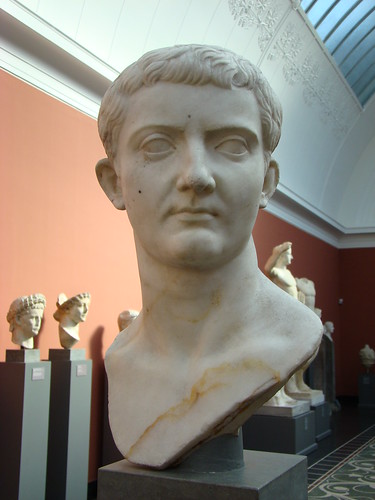
name, date, location and year. and a significance
protrait of tiberius, fayum egypt 4ce
even though he reigned at 56 his portrait has the same youthfulness livia and augustus had.
his hair is roman-like and his facial features are simialr to livia. (his mother).
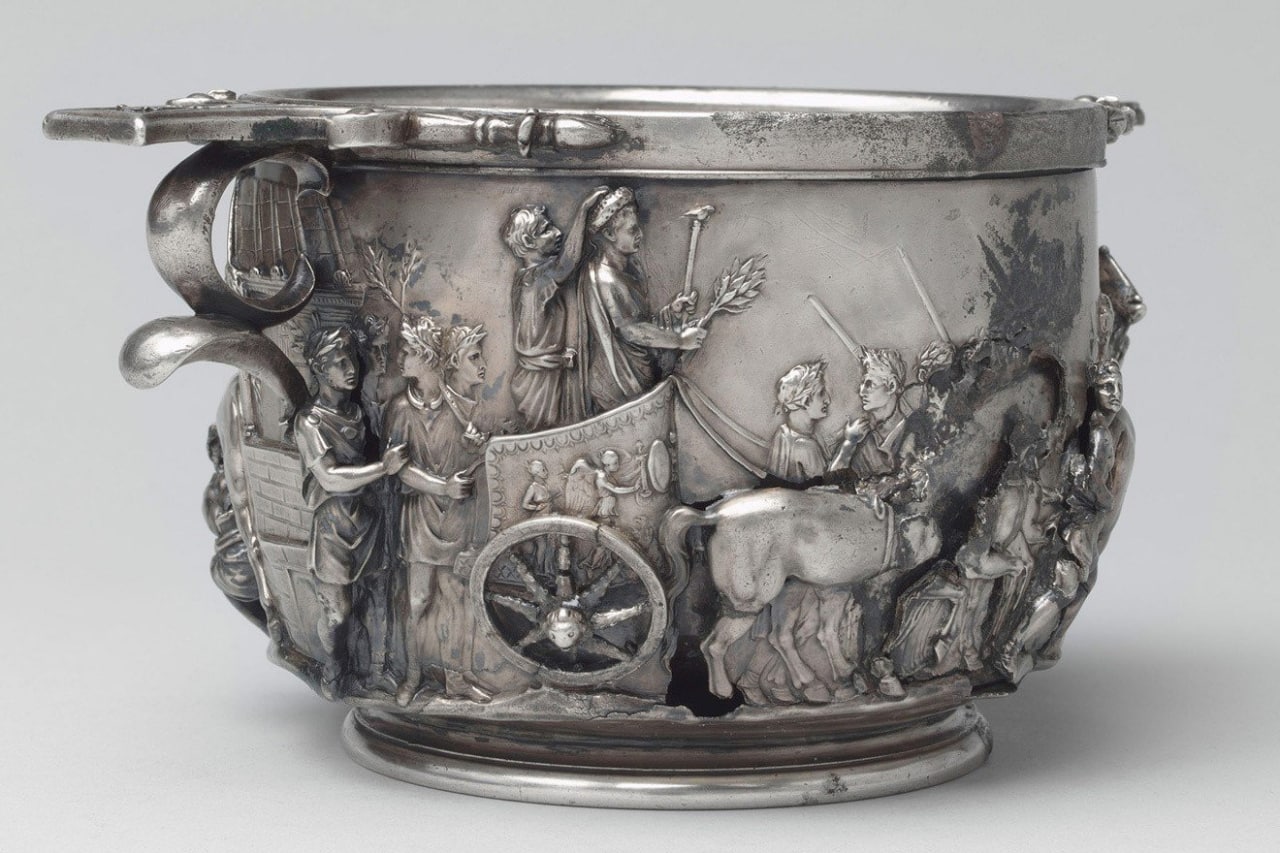
name, date and significance
the triumph of tiberius a silver scyphus from boscoreale.
15-20 ce
a triumph is the highest achivement a roman general could get.
used to link tiberius to augustus since augustus is depicted amongst the gods on it.
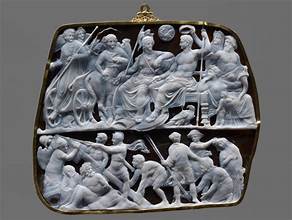
name, date. location and significance
the gemma augustae in rome 15 ce or early first century.
made from carved sardonyx and this is one of the largest carved sardonyx. (carved by hand)
upper registrar- augustus is shown as divine and tiberius is getiing off a chariot accmpanied by victory.
lower registrar- a trophy being erected surronded by captive enemies. trophies are made by the weapons of victory and are set up to commemorate that victory.
